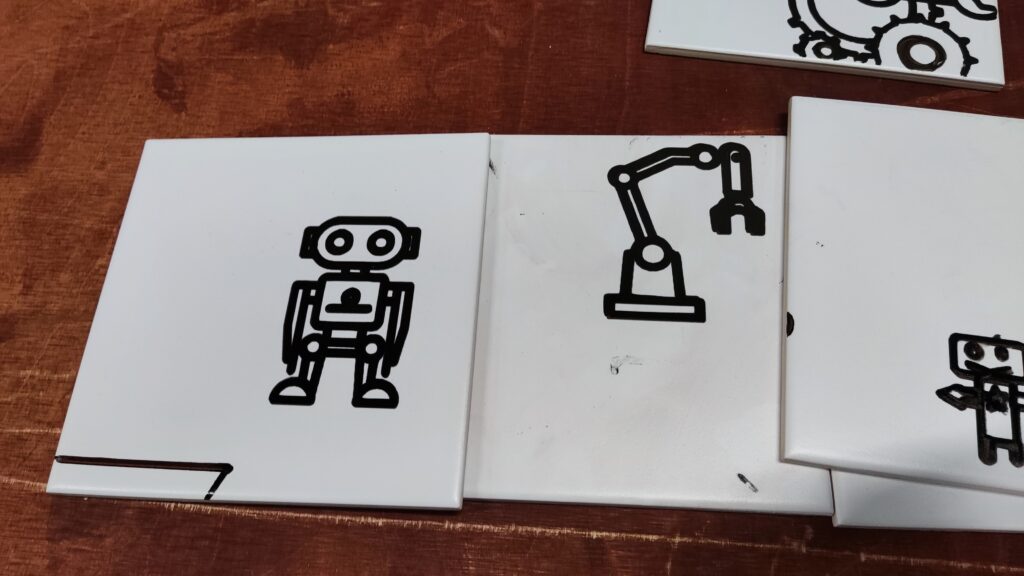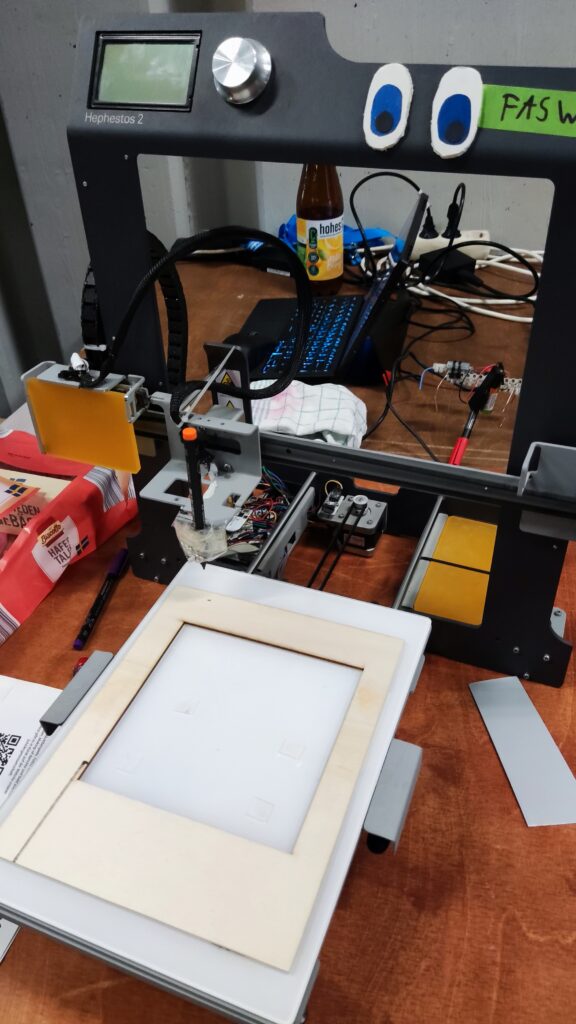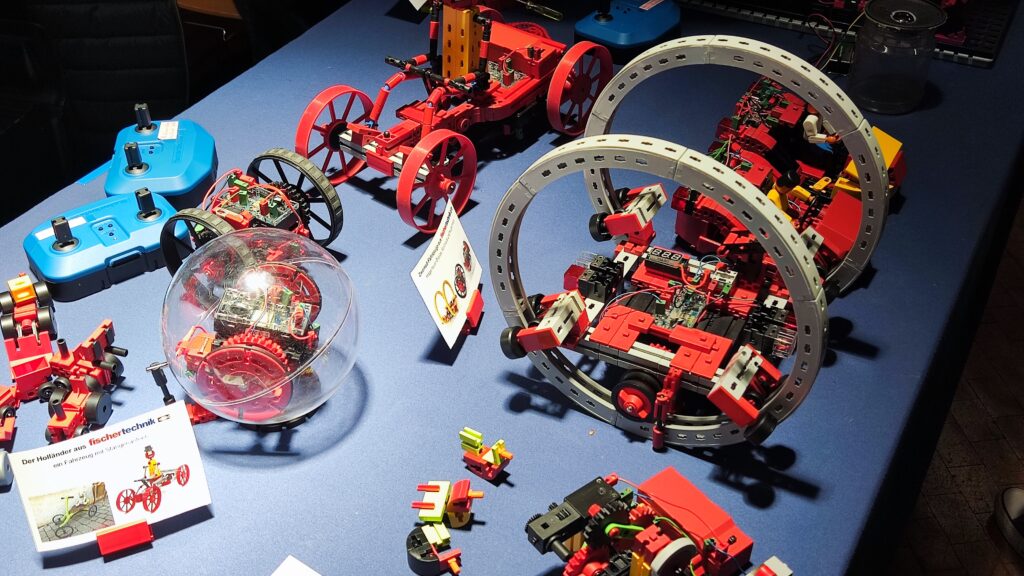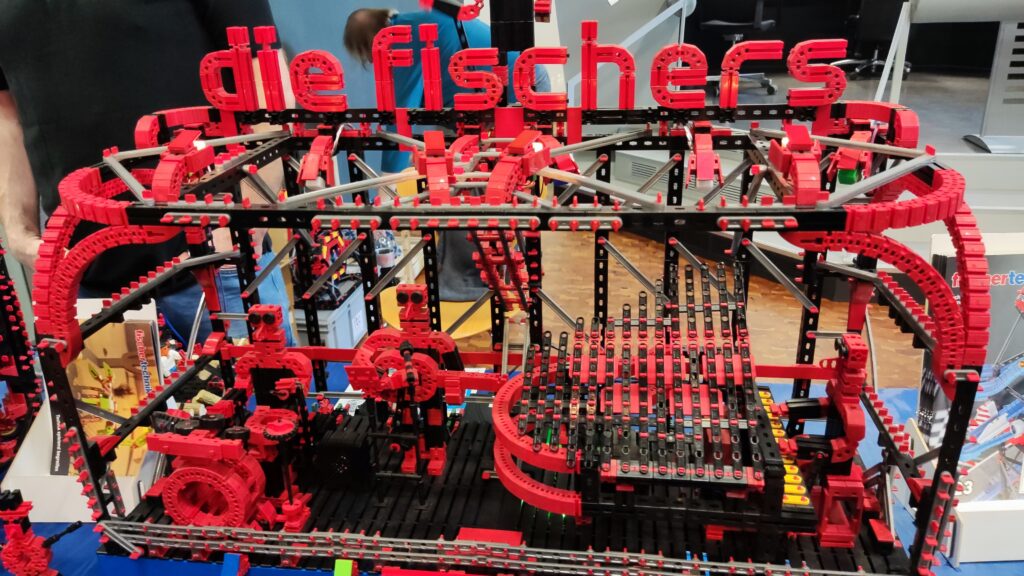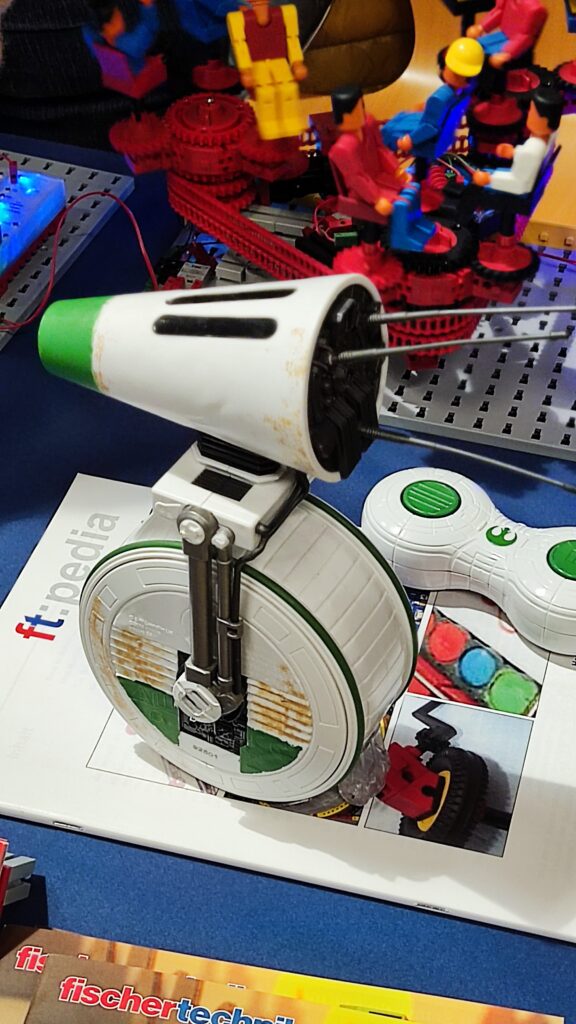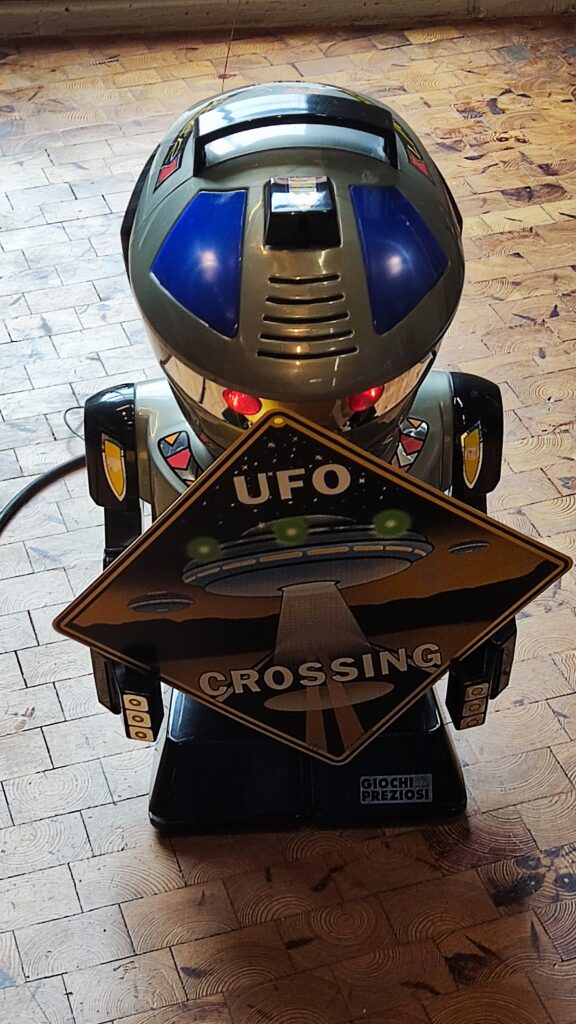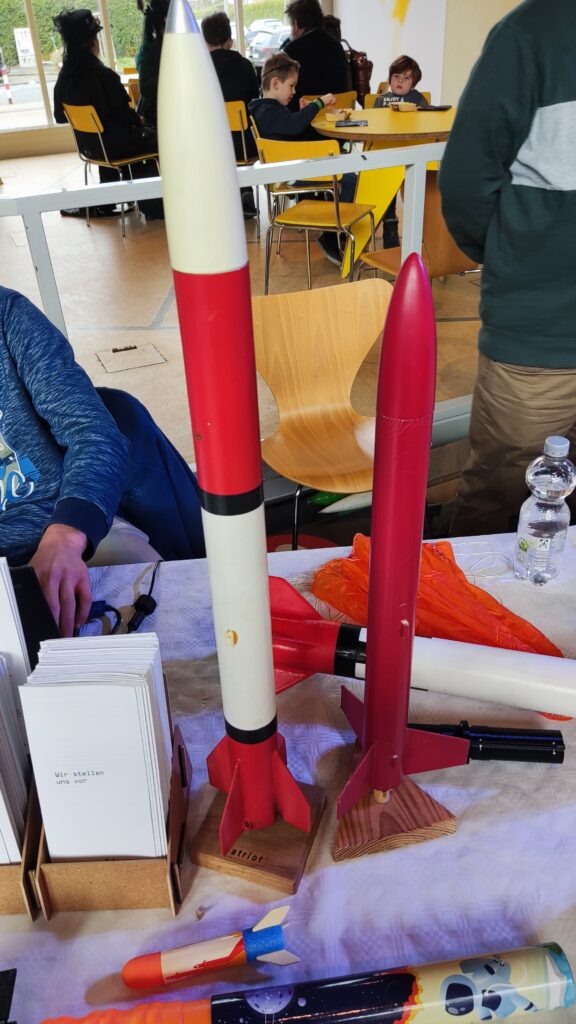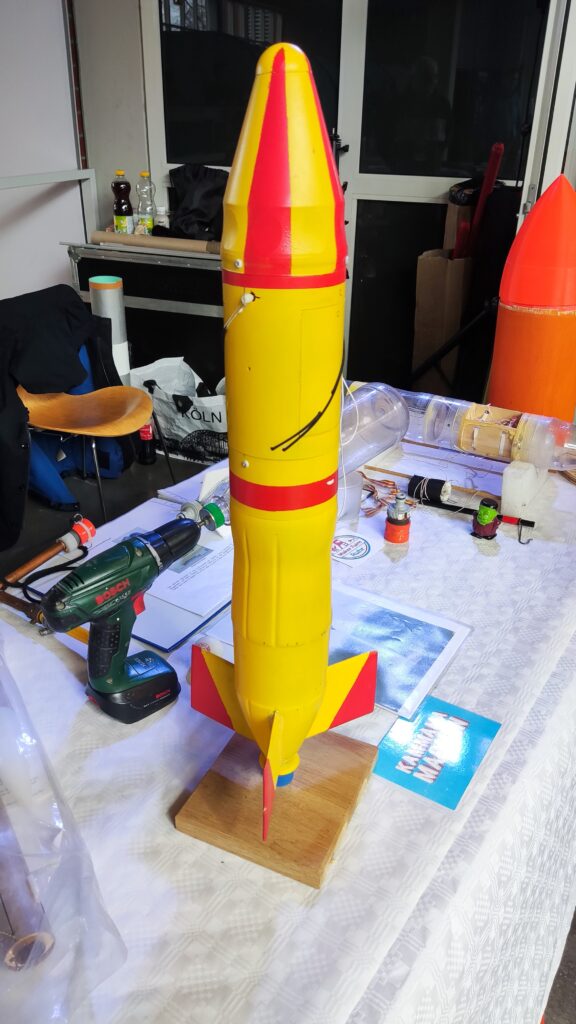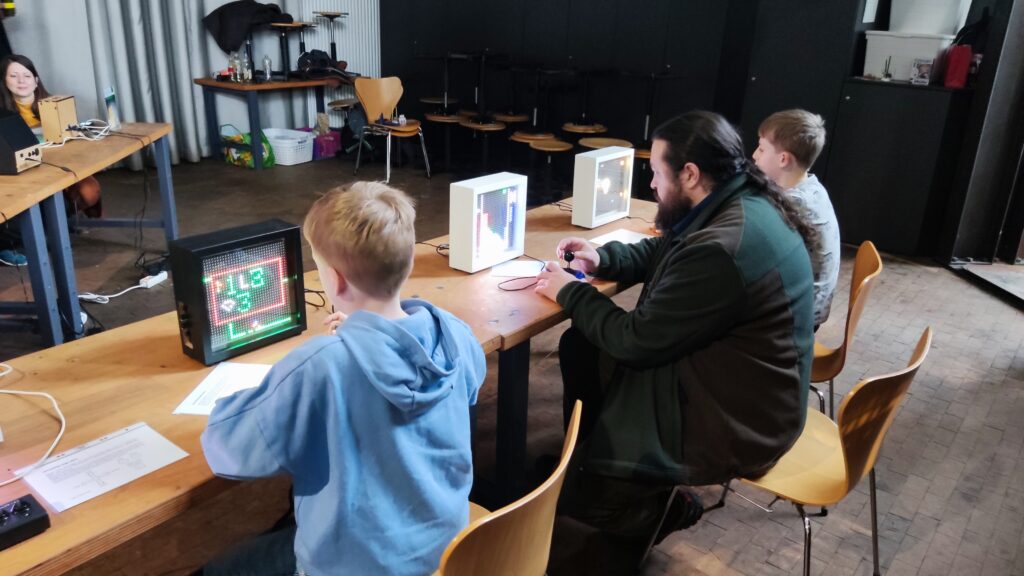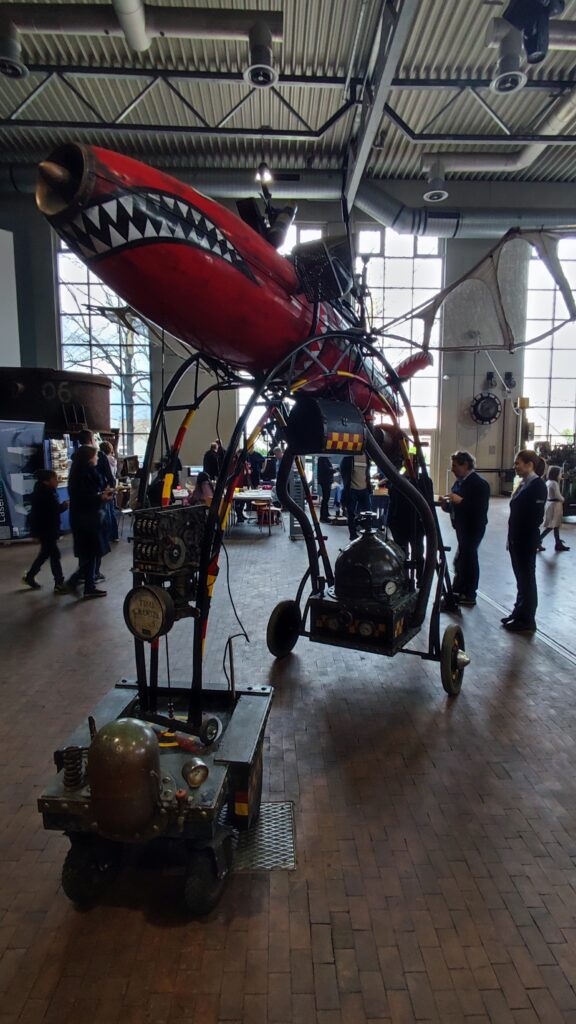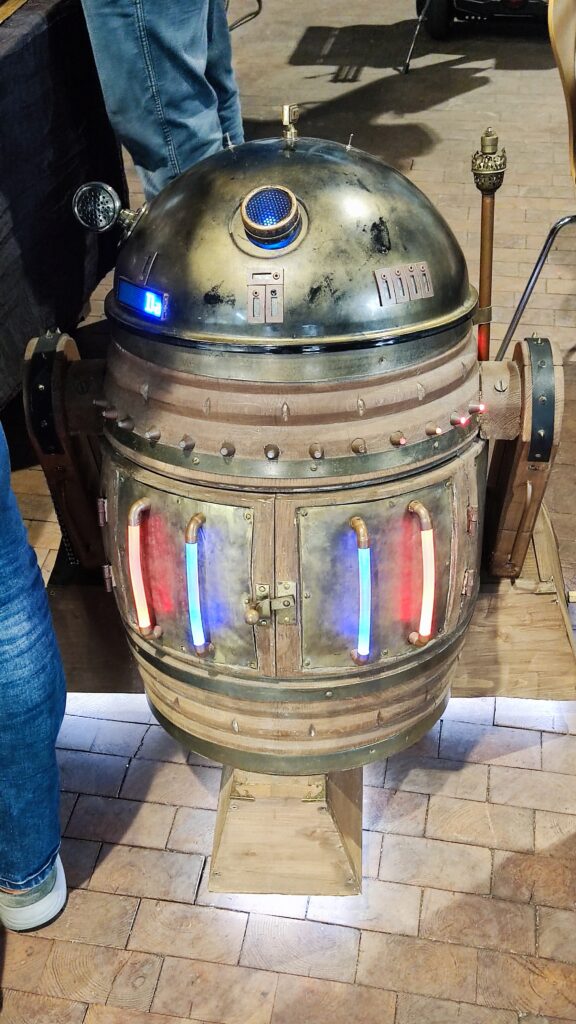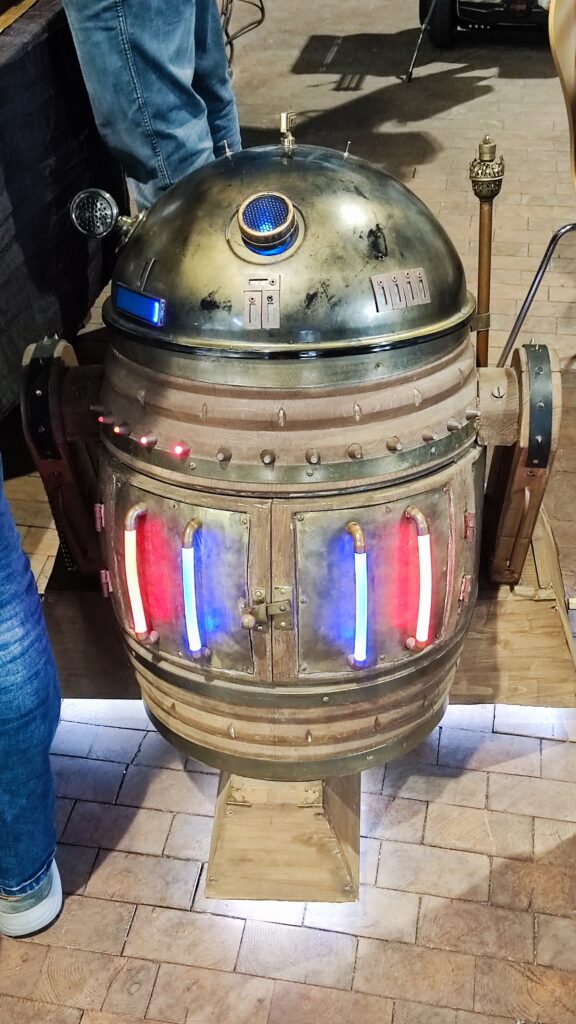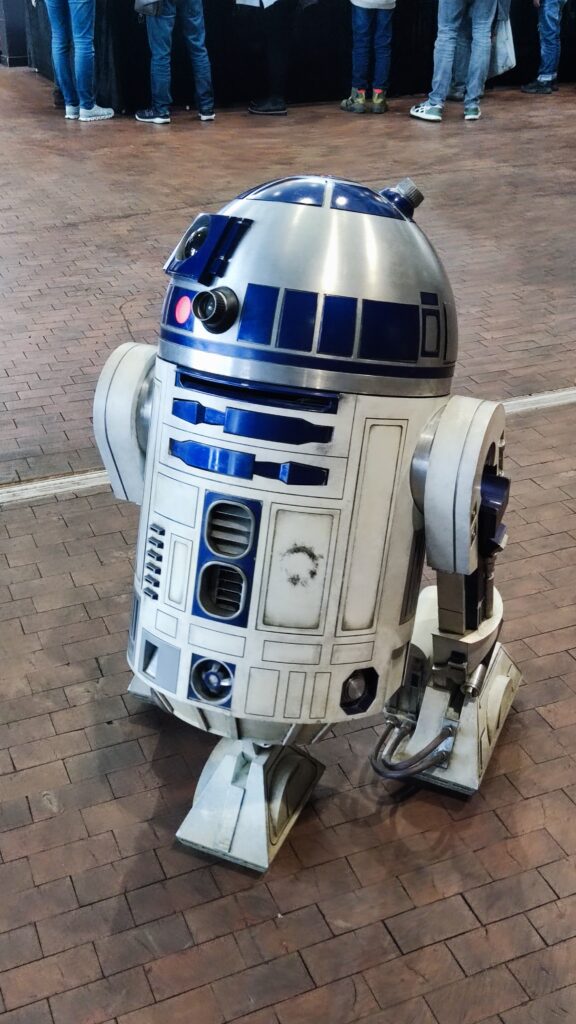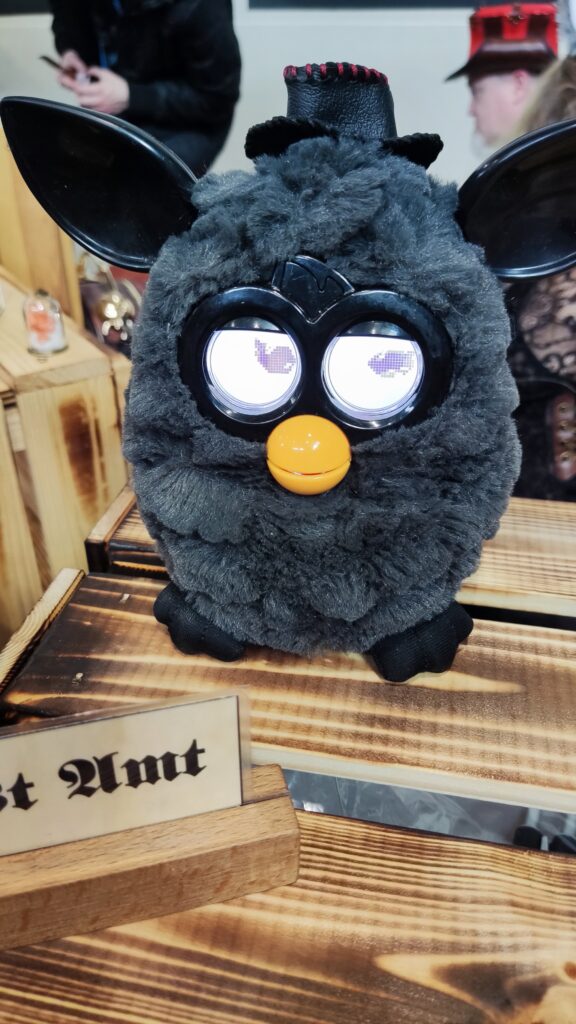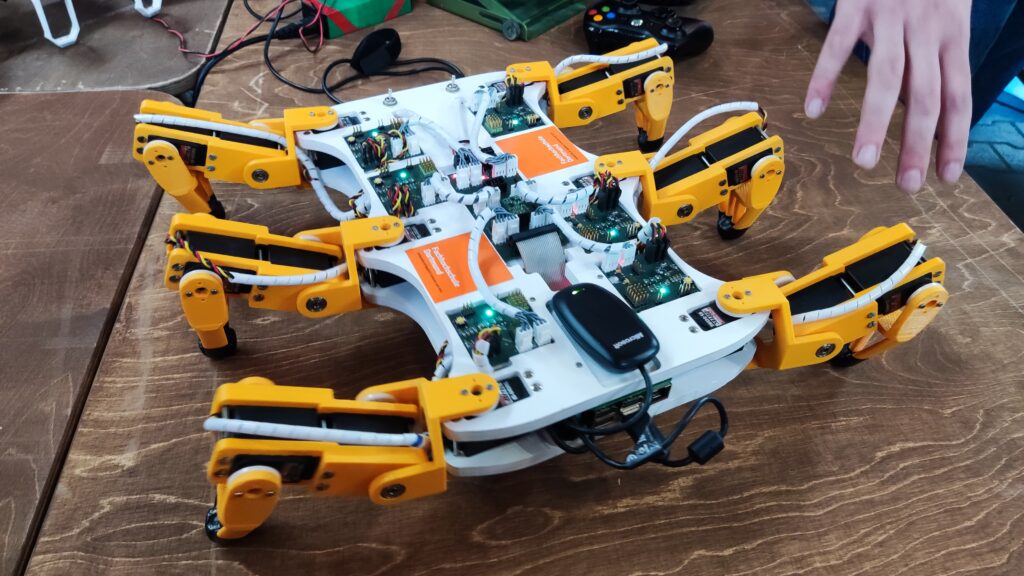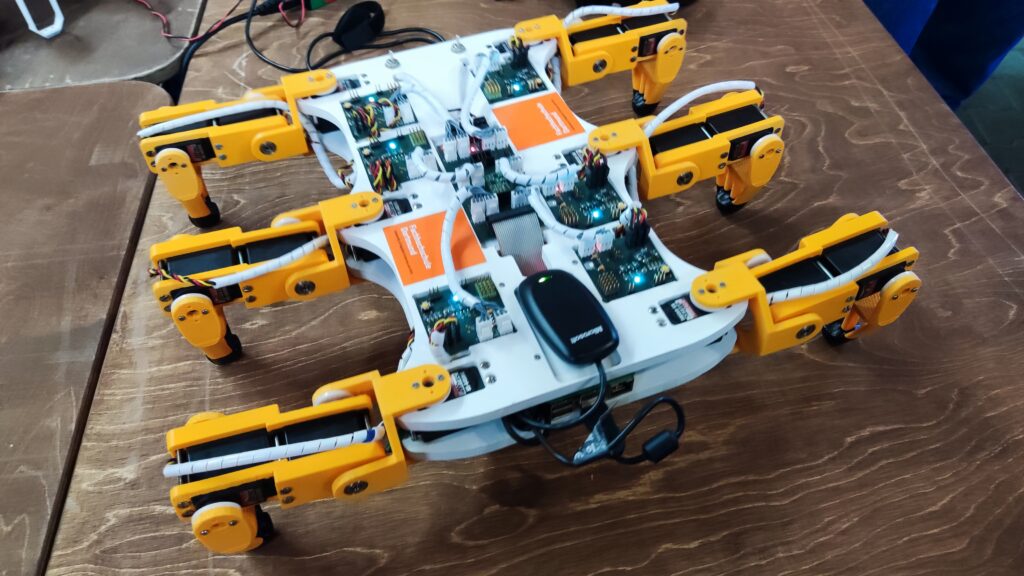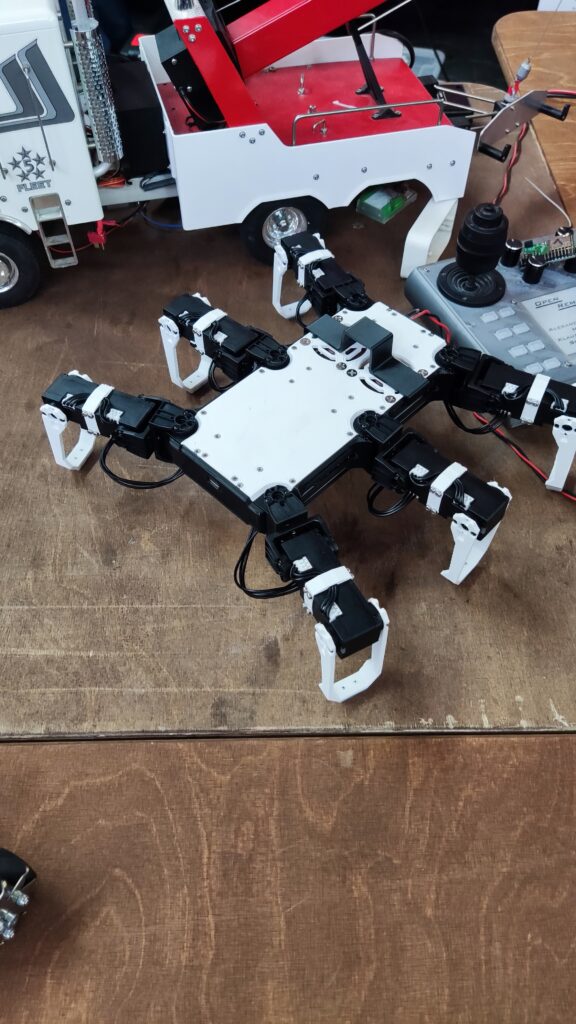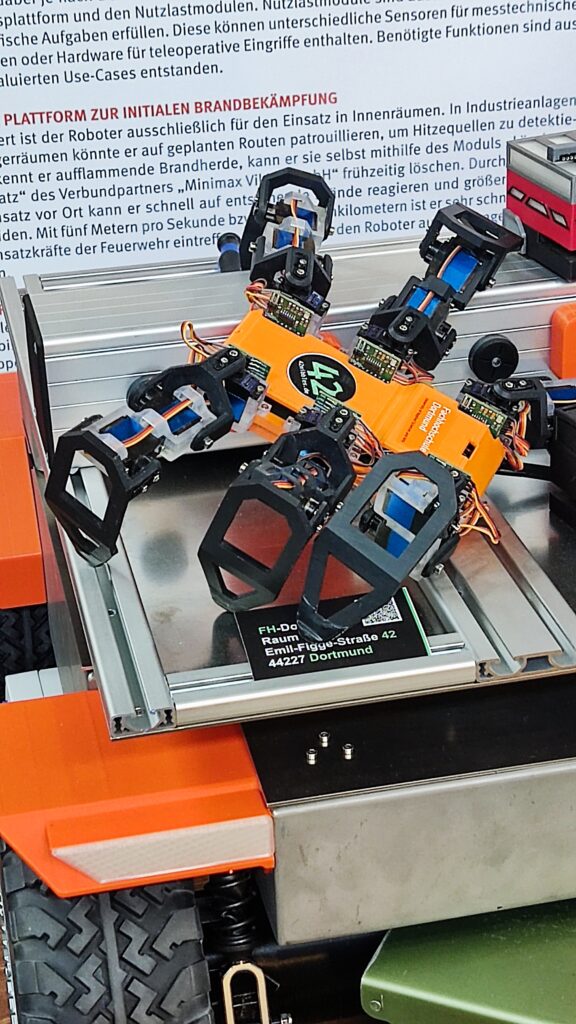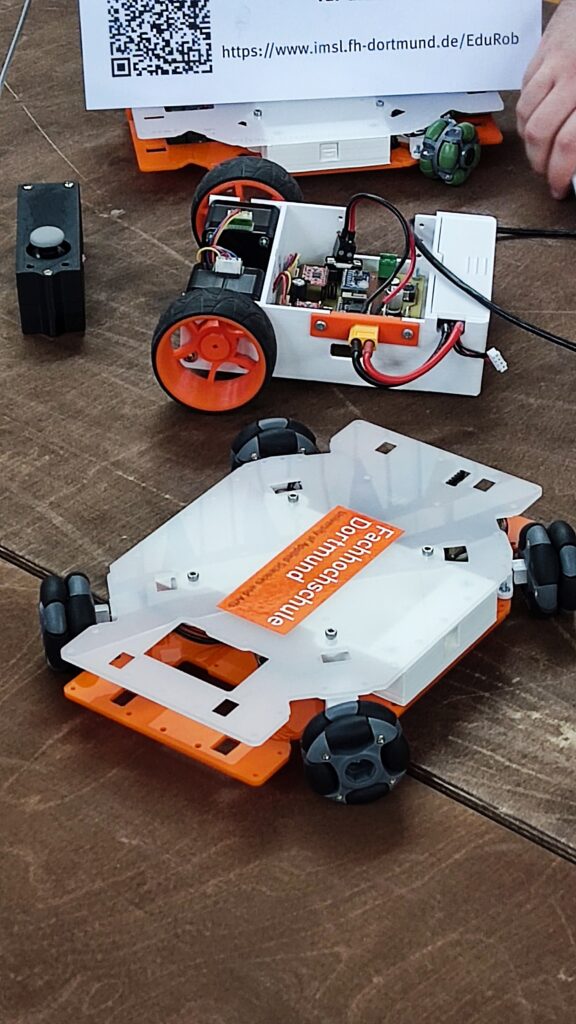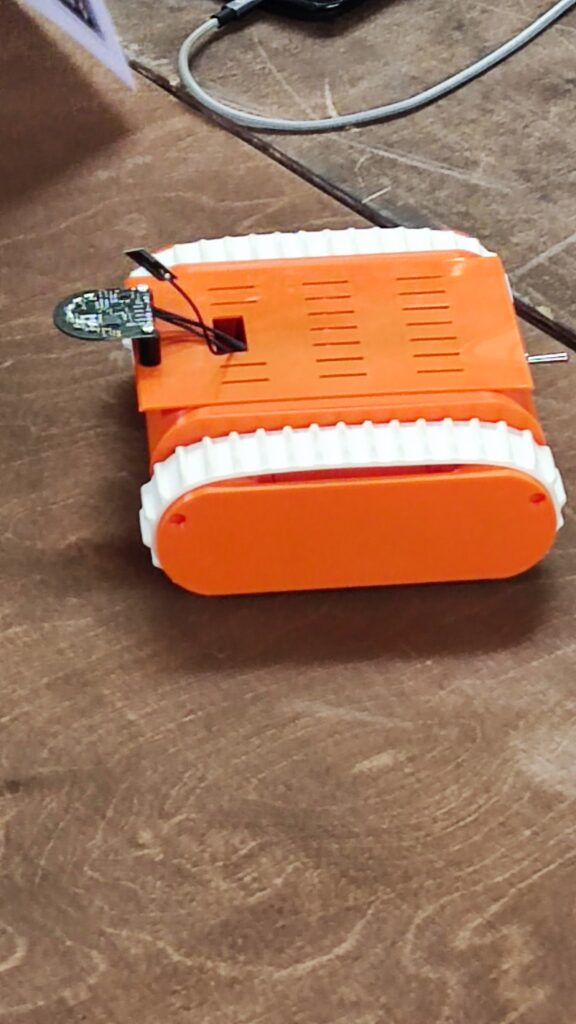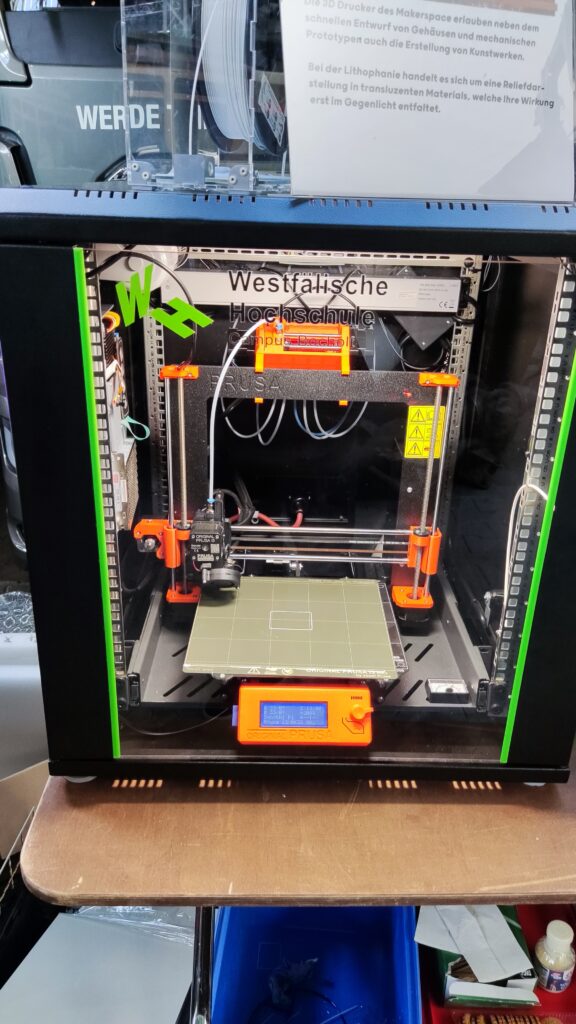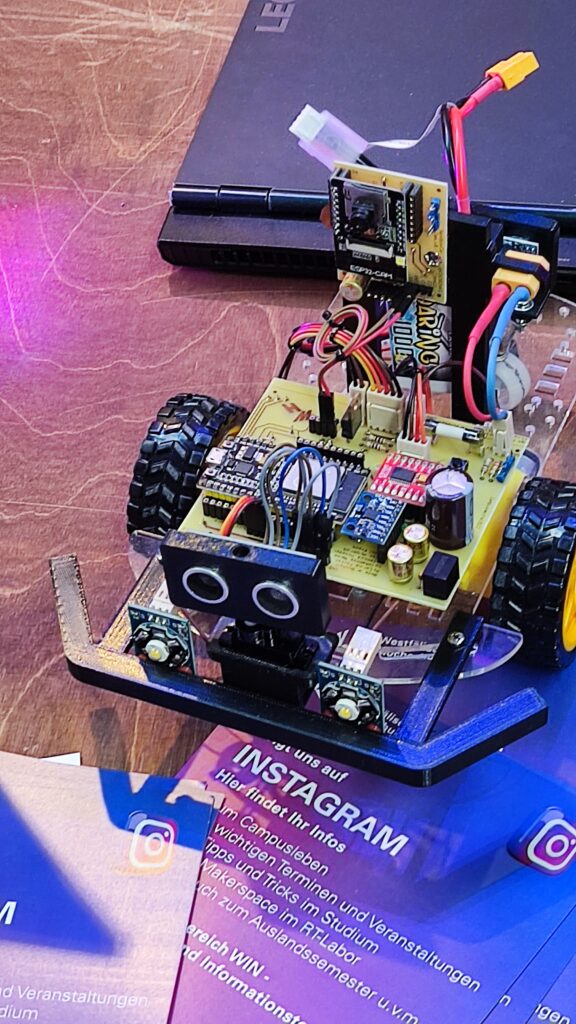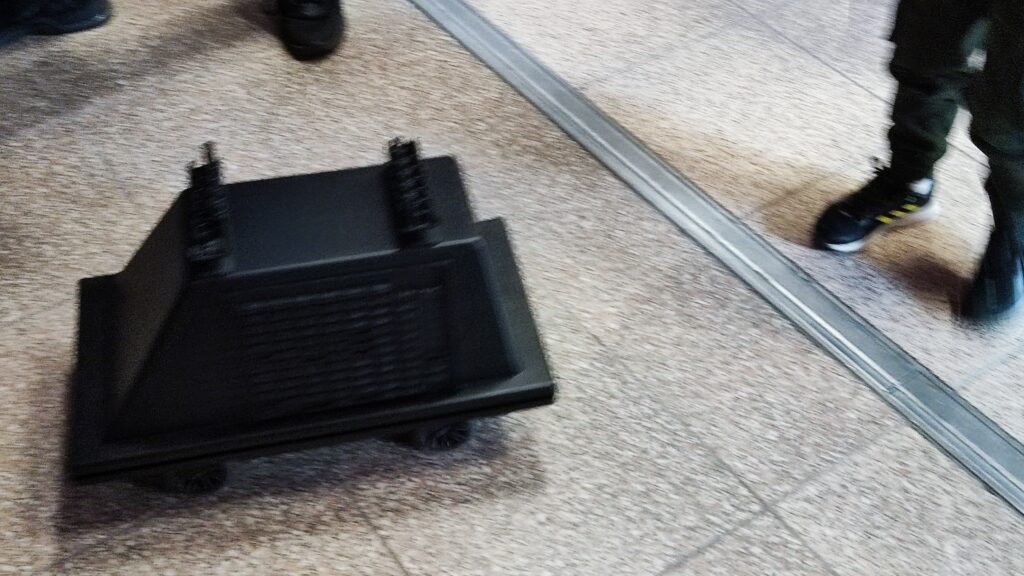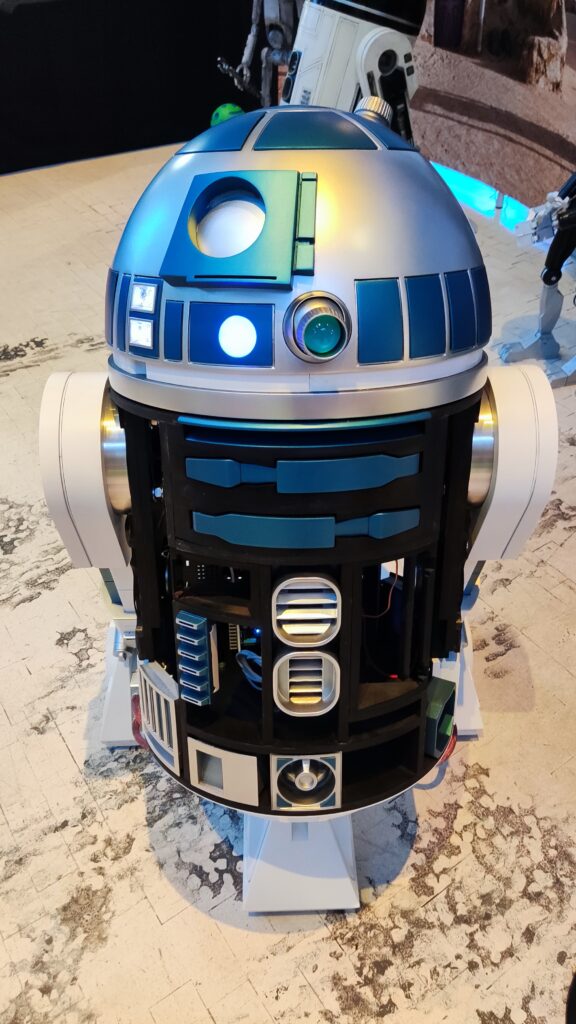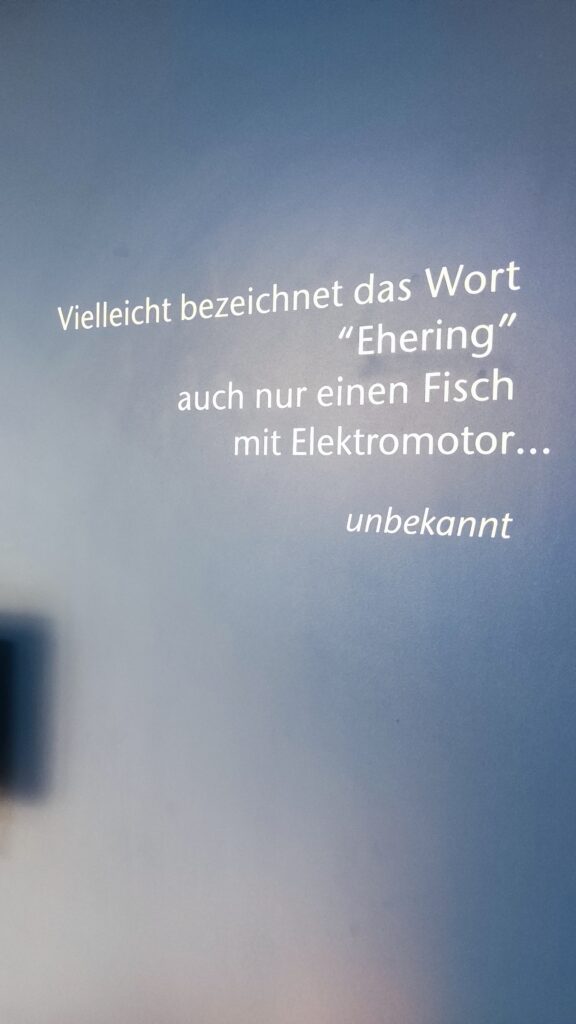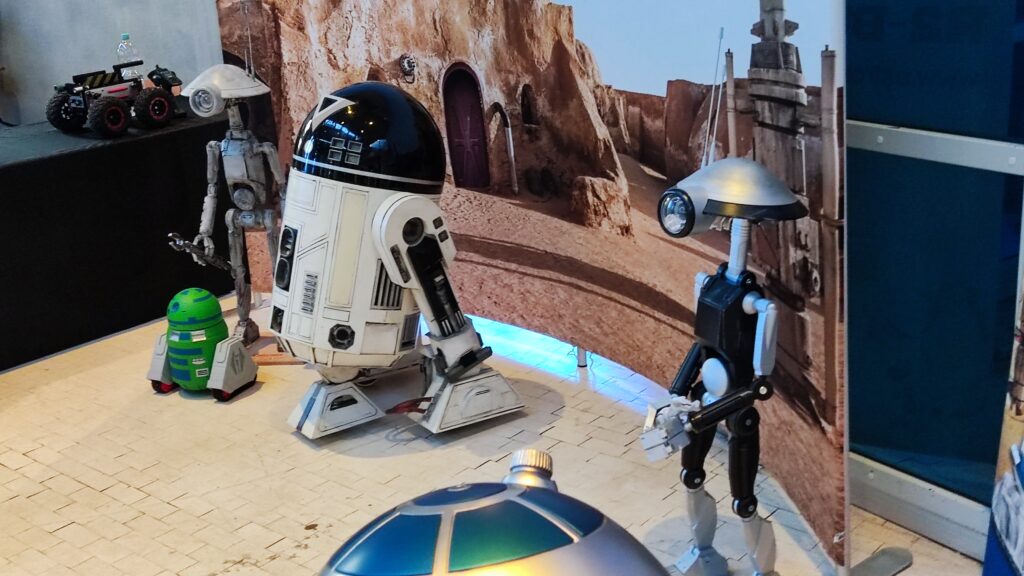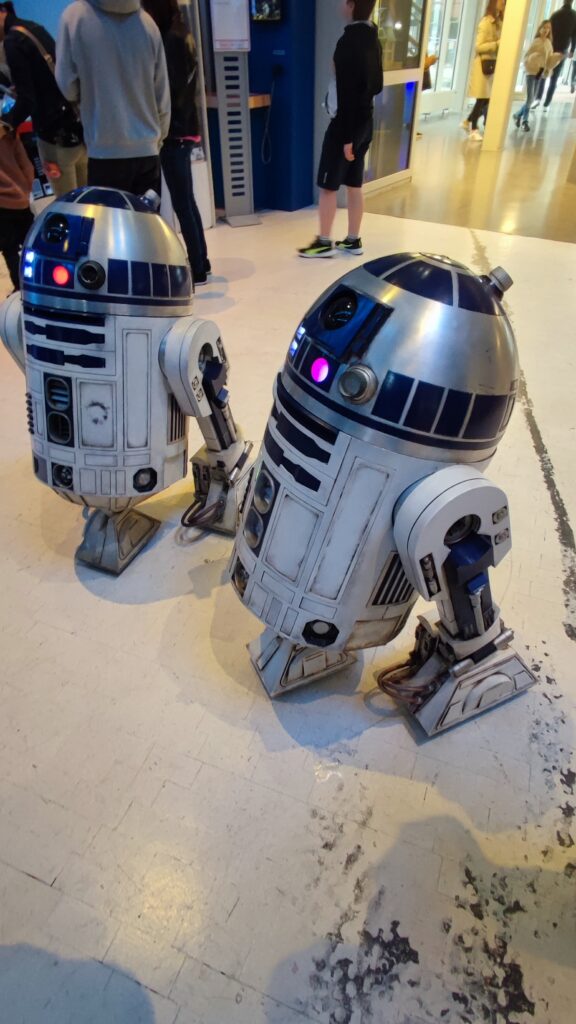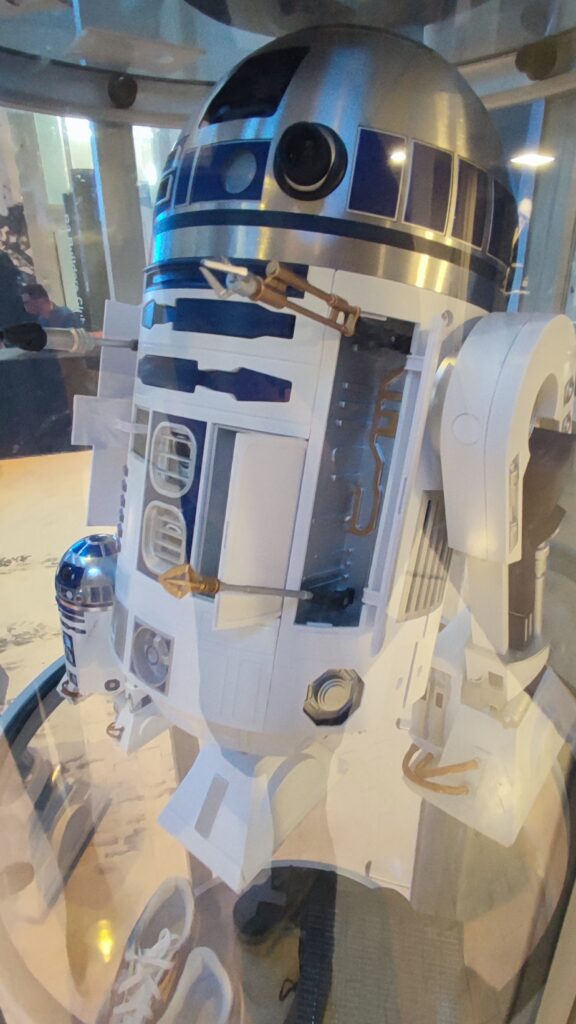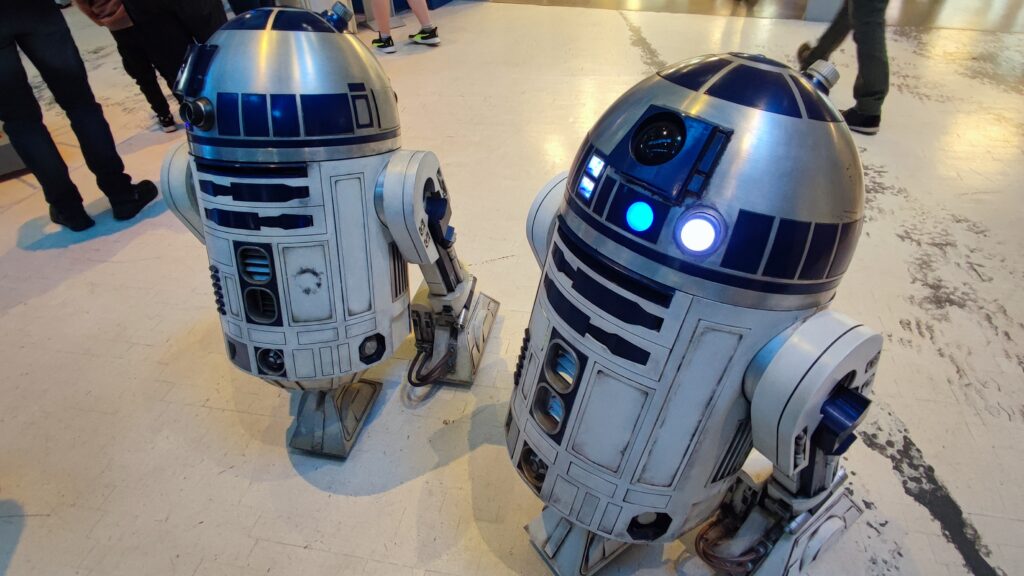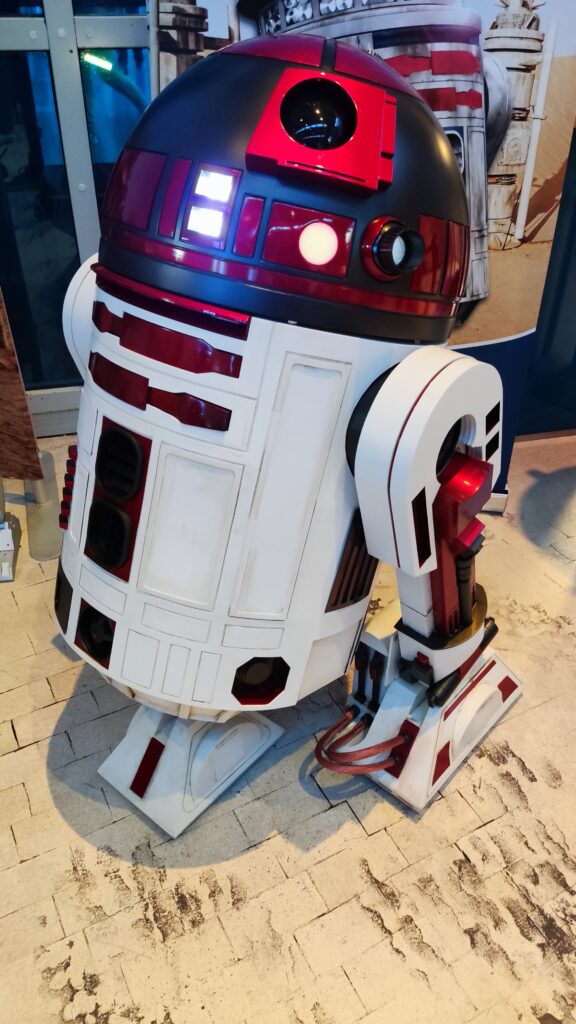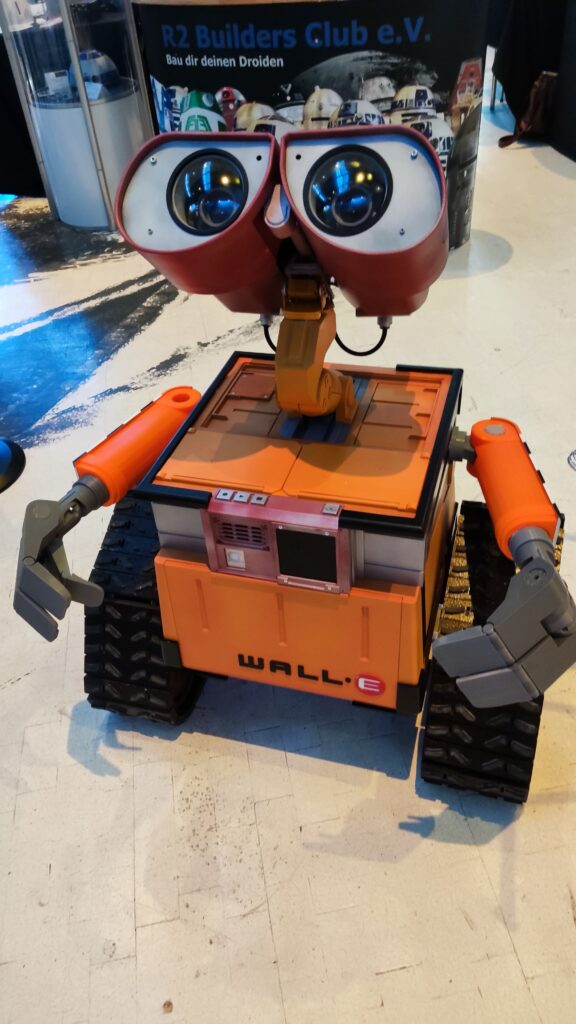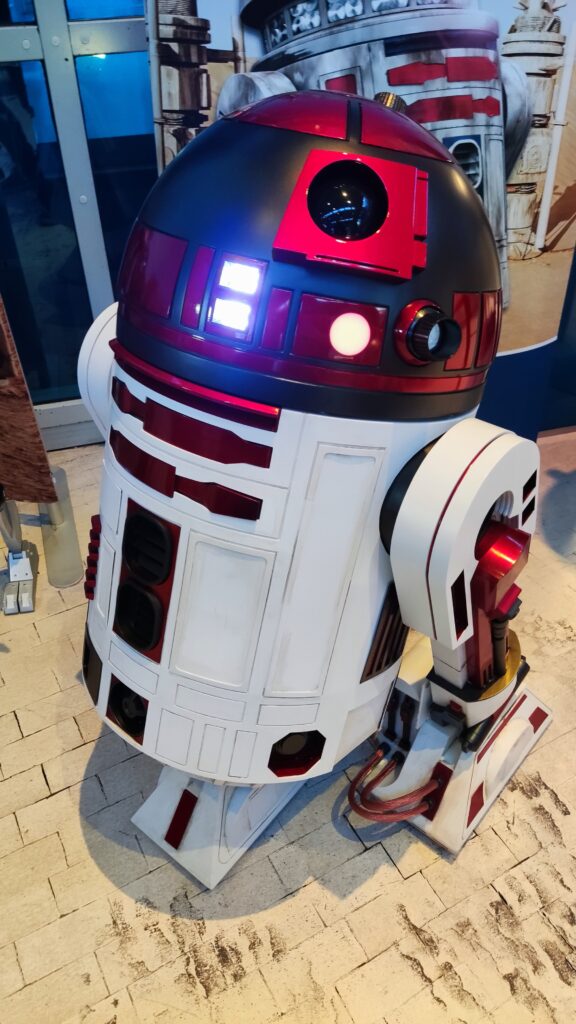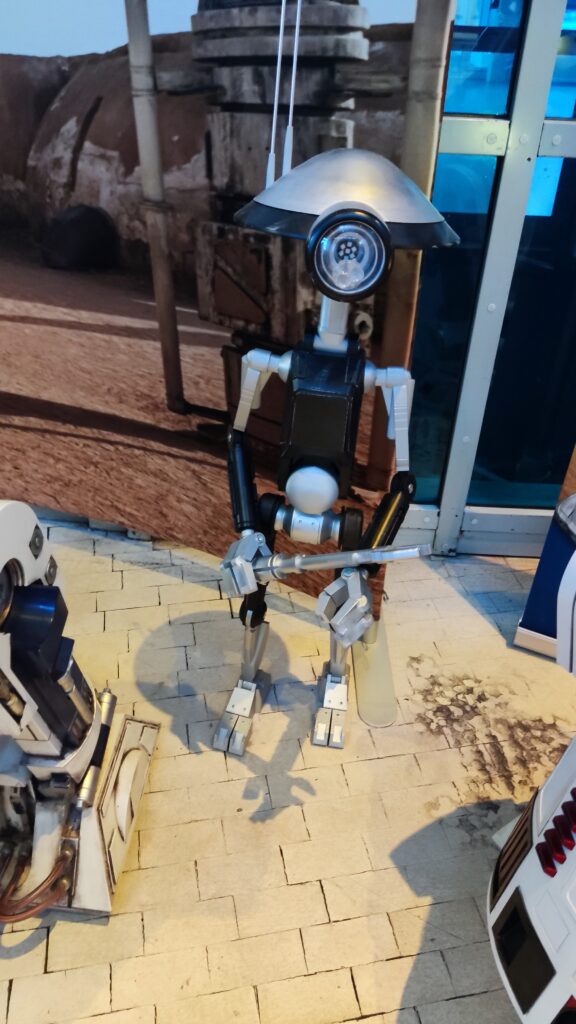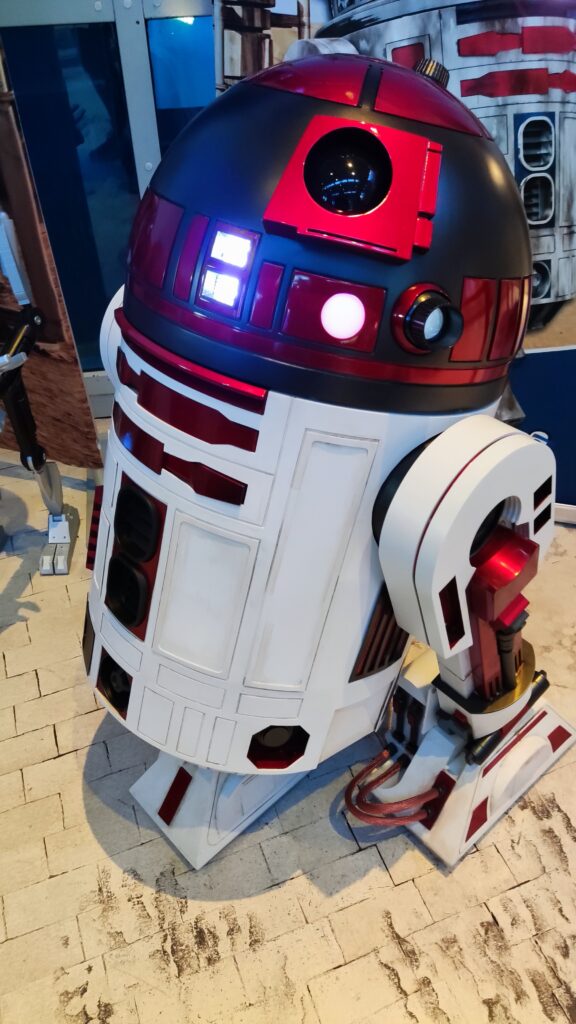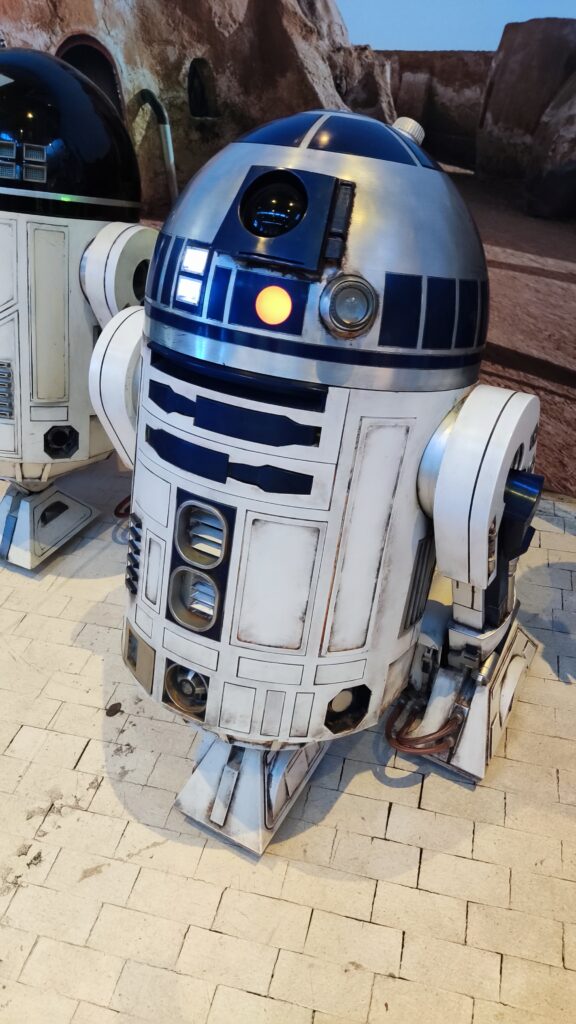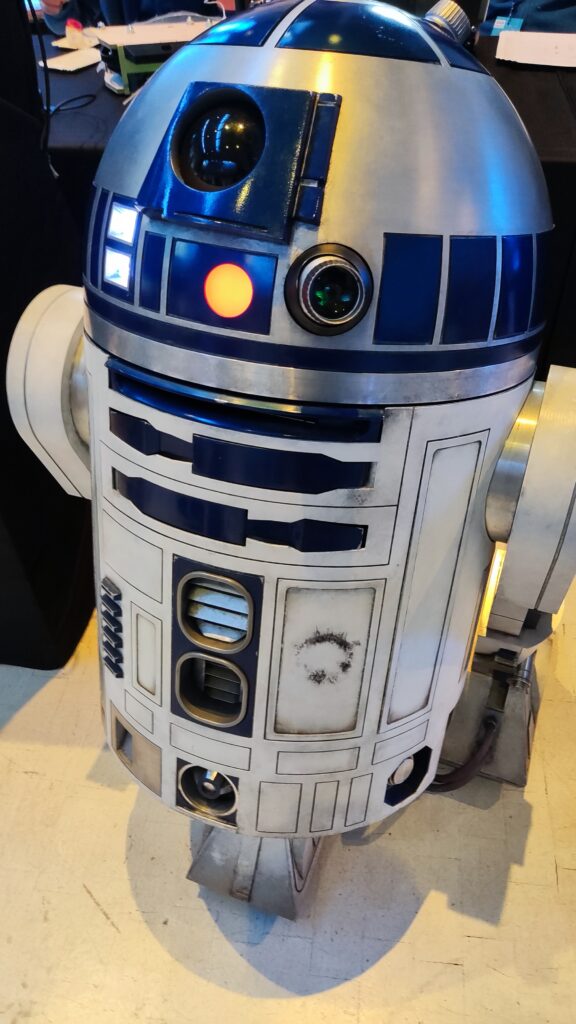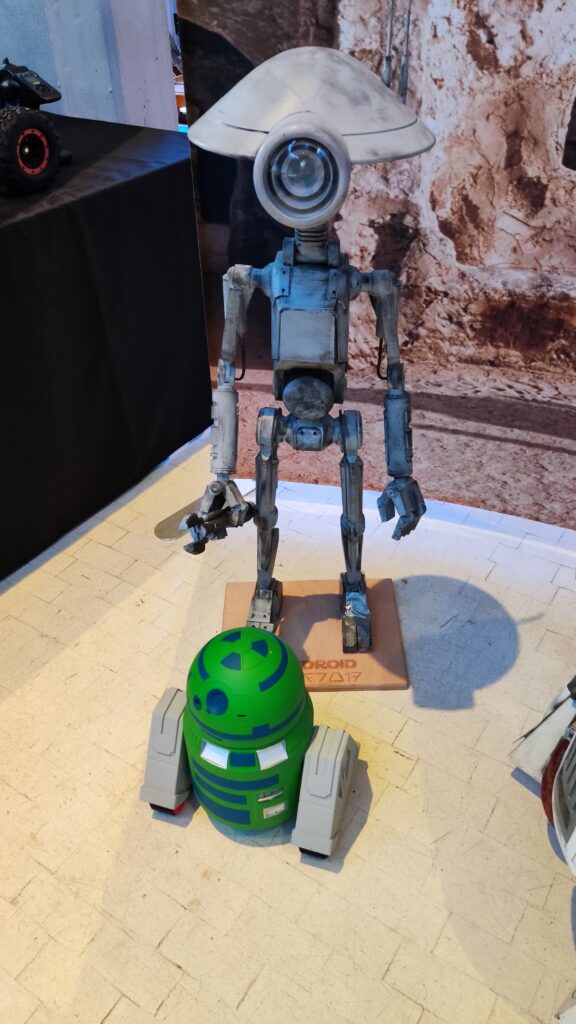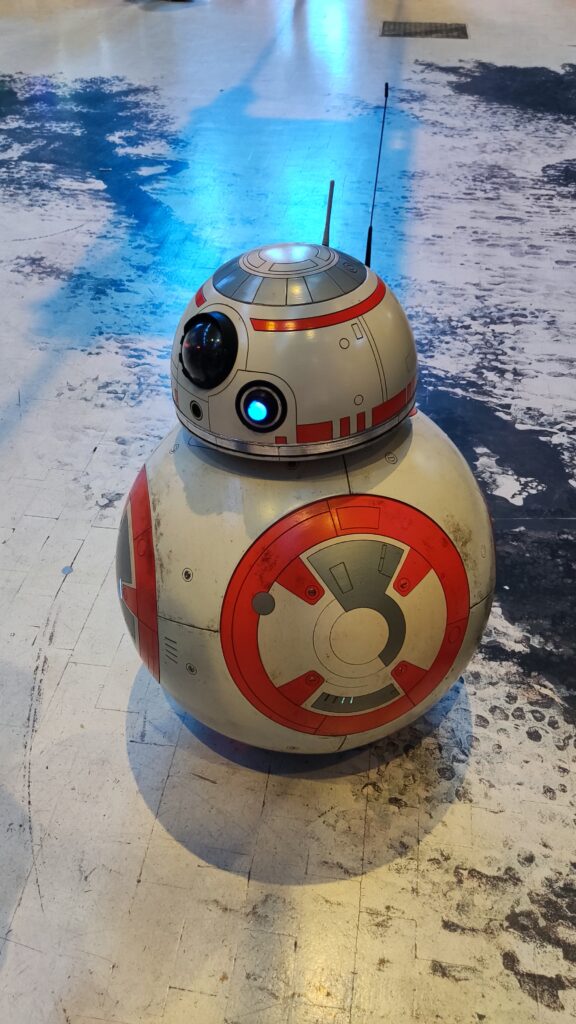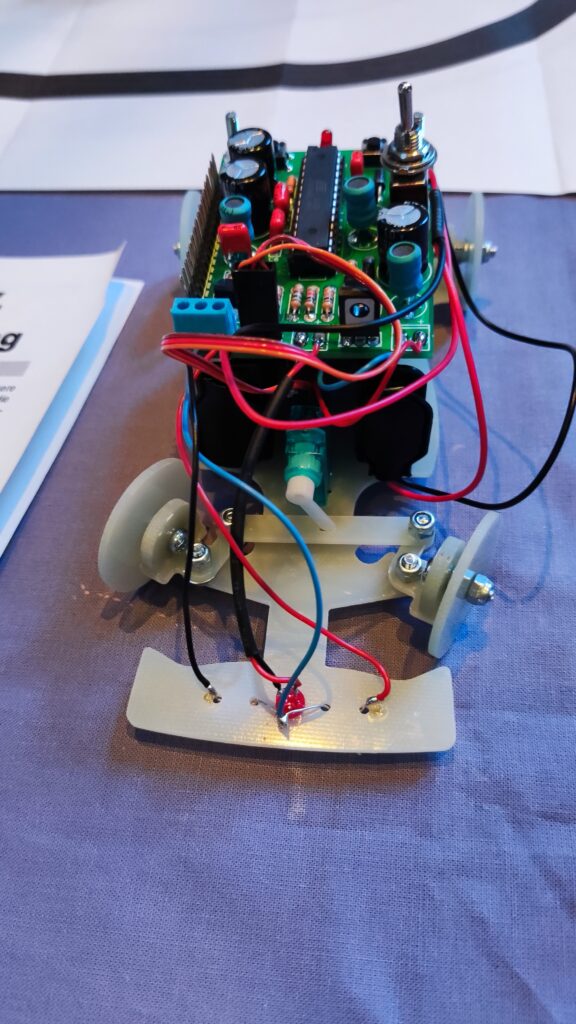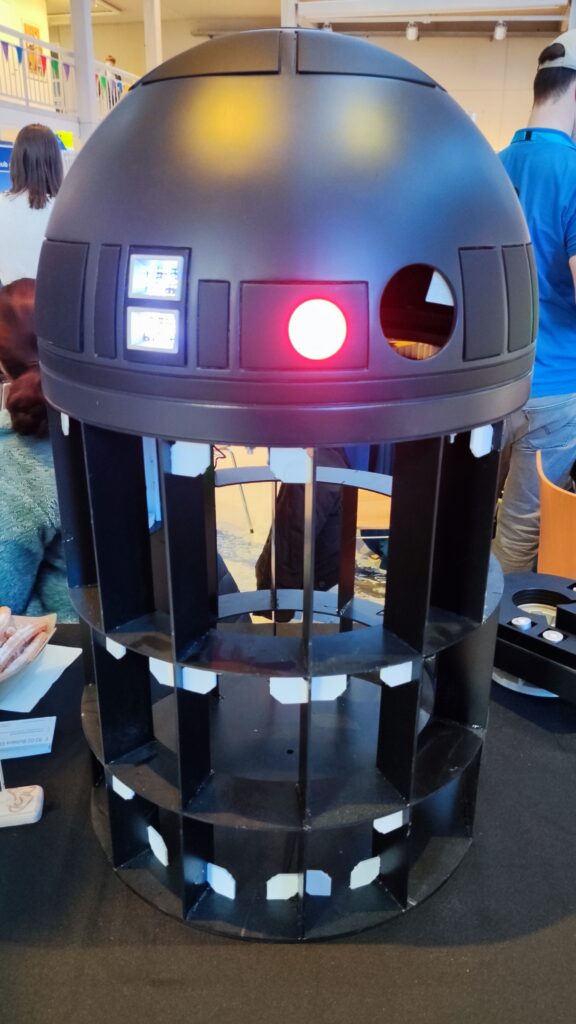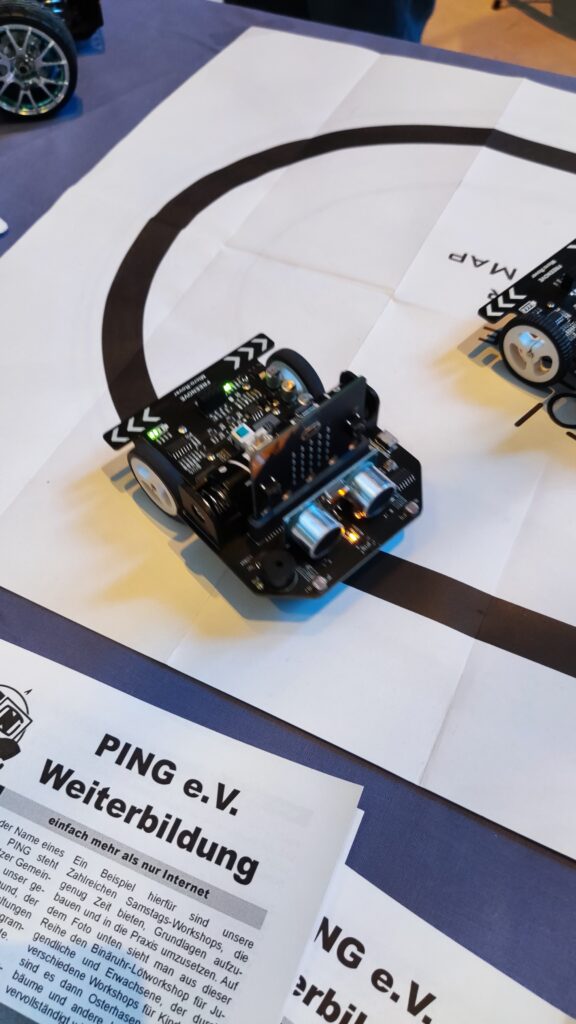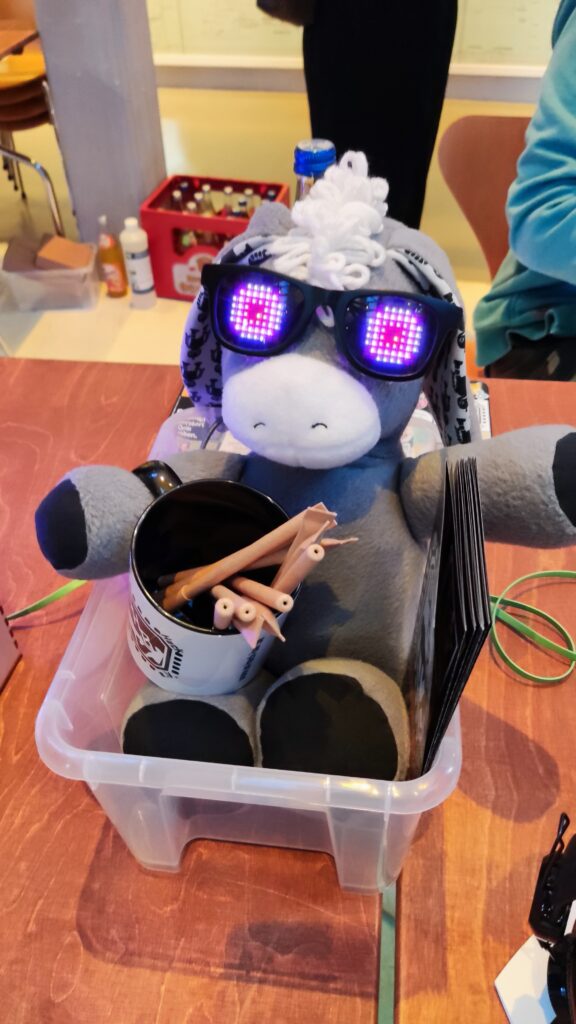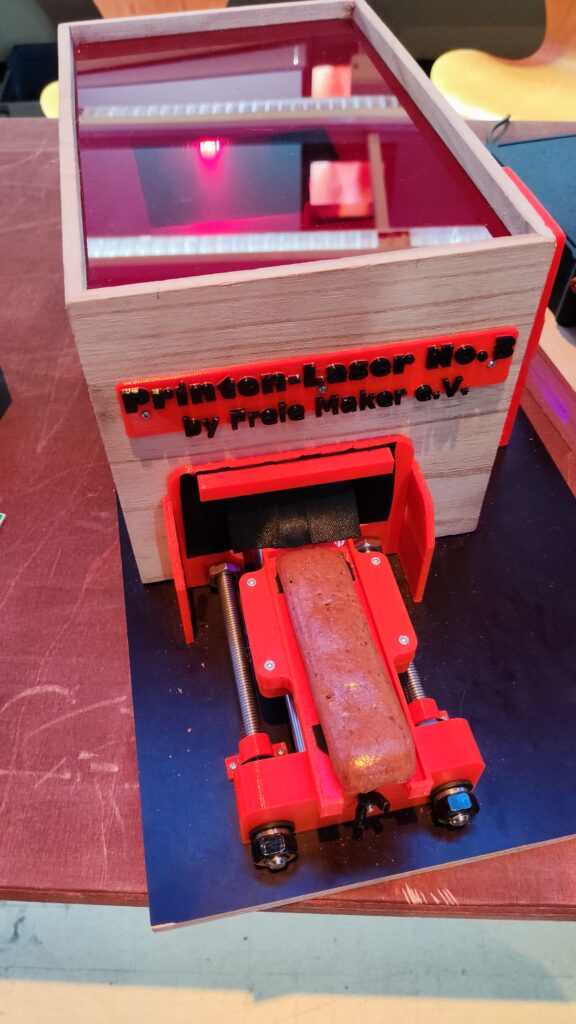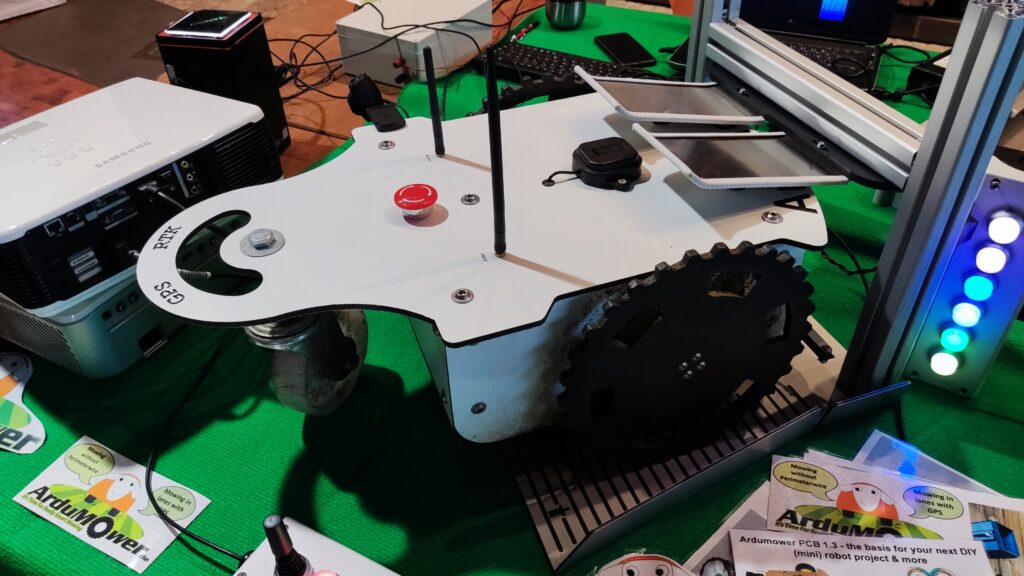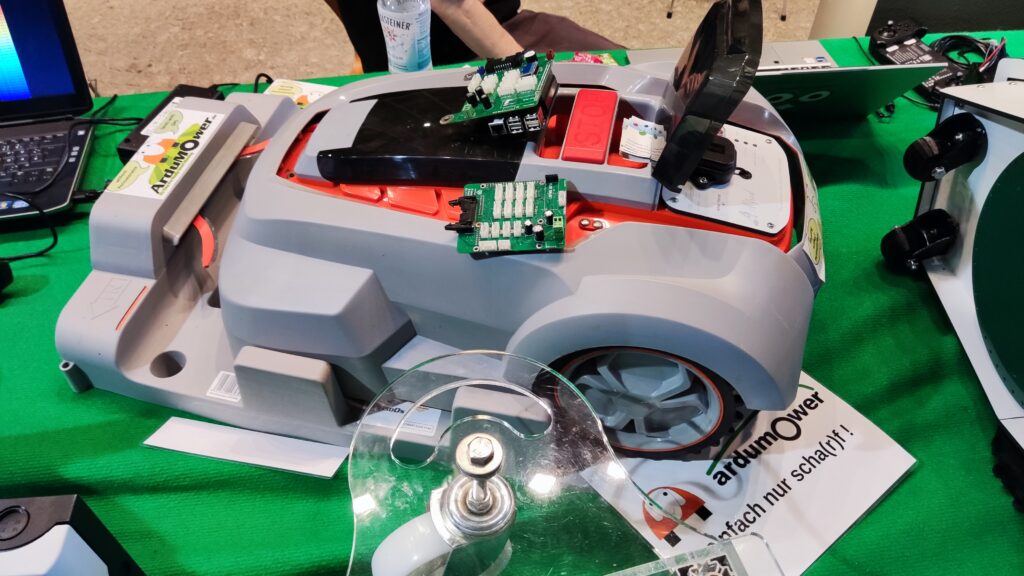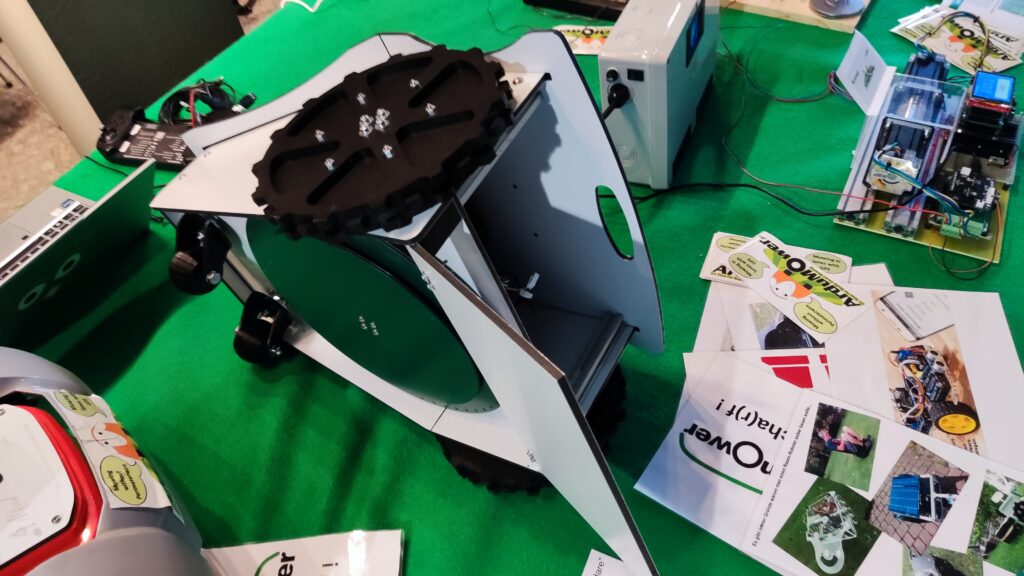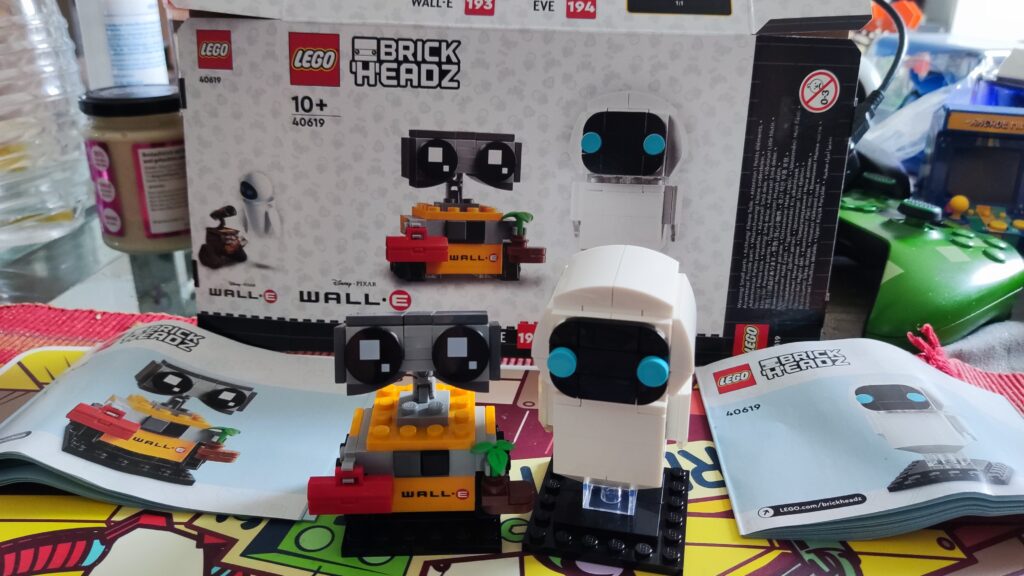
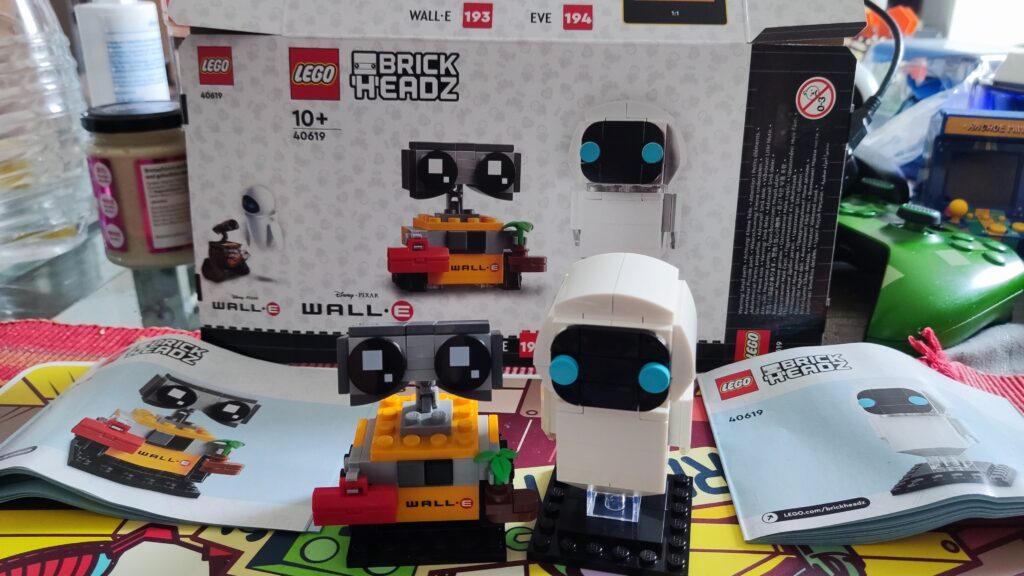
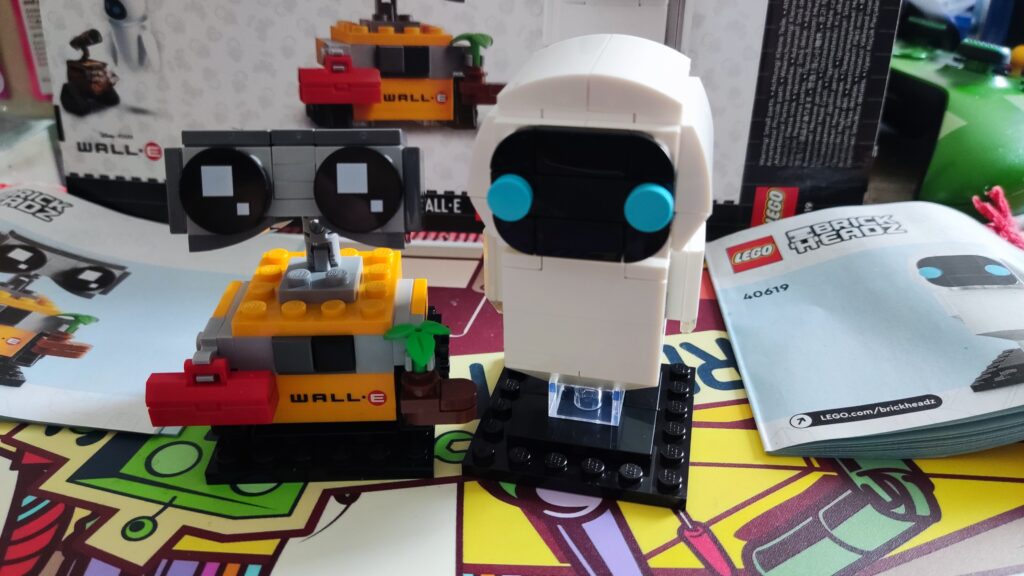
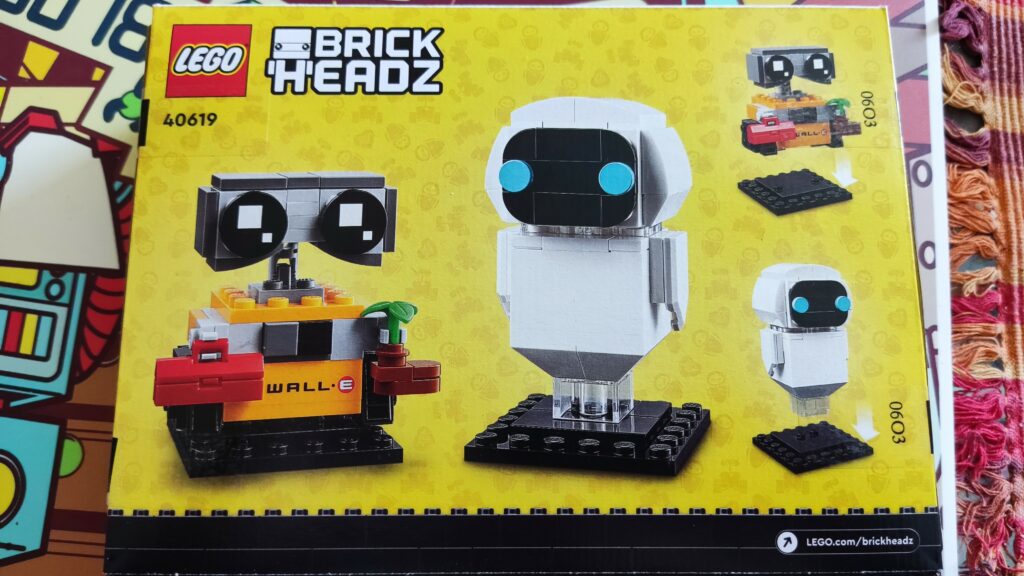
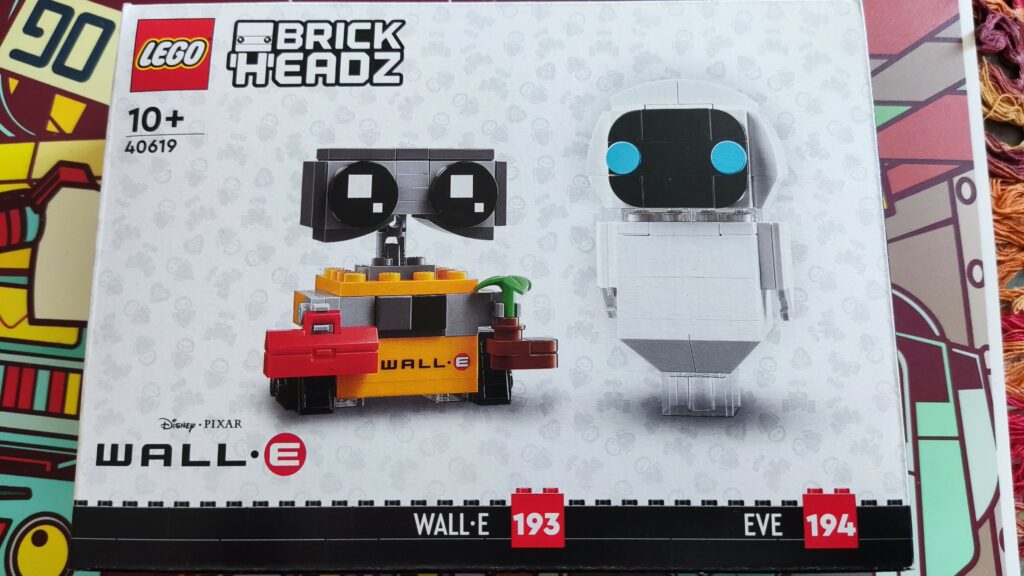






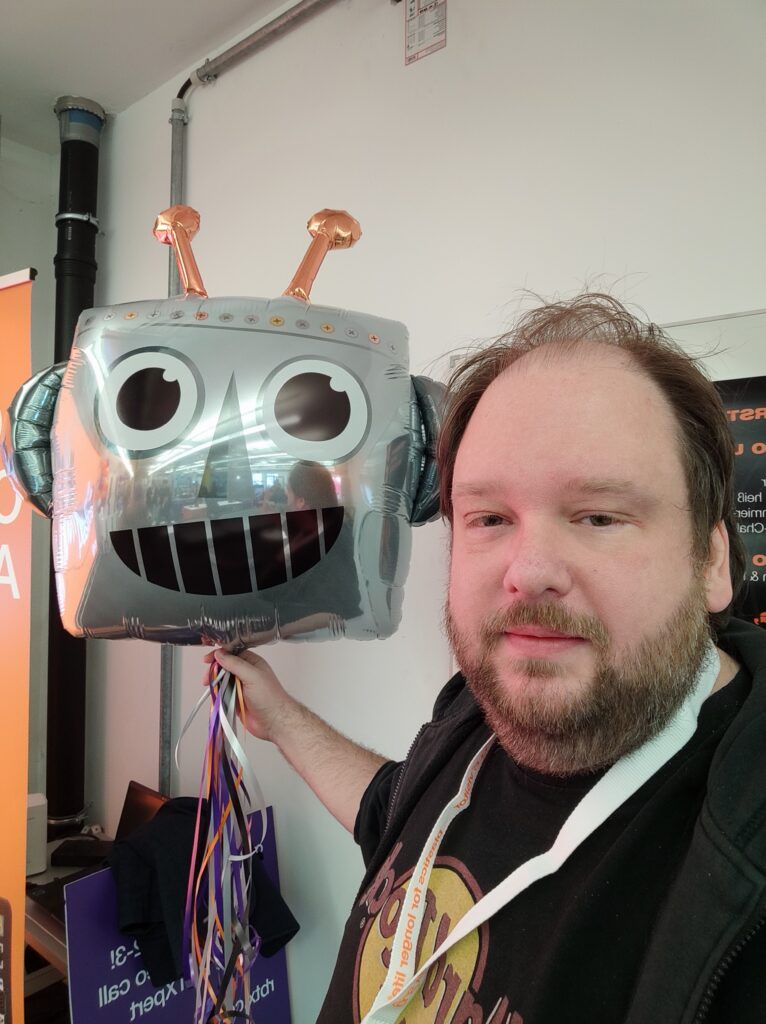
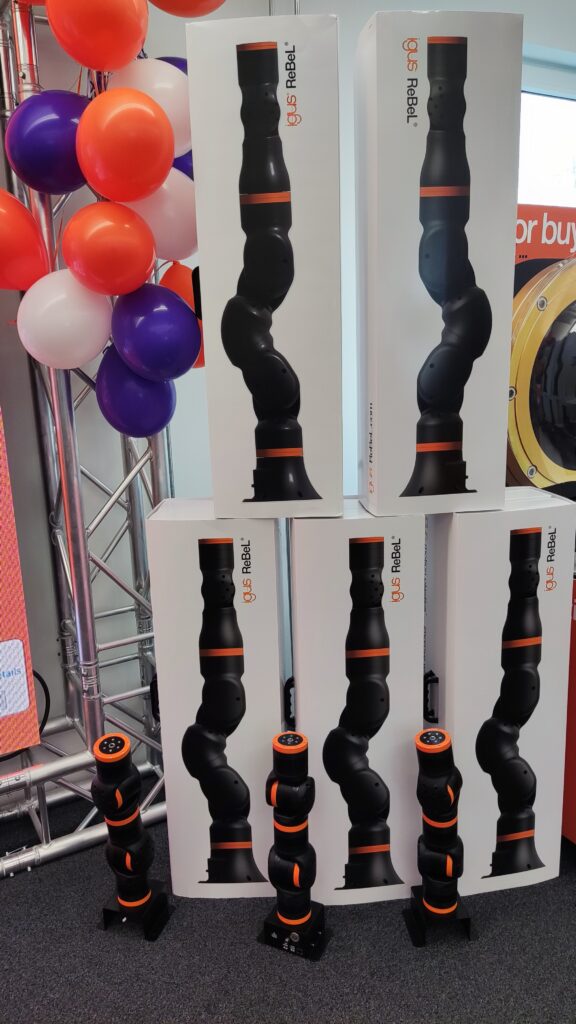
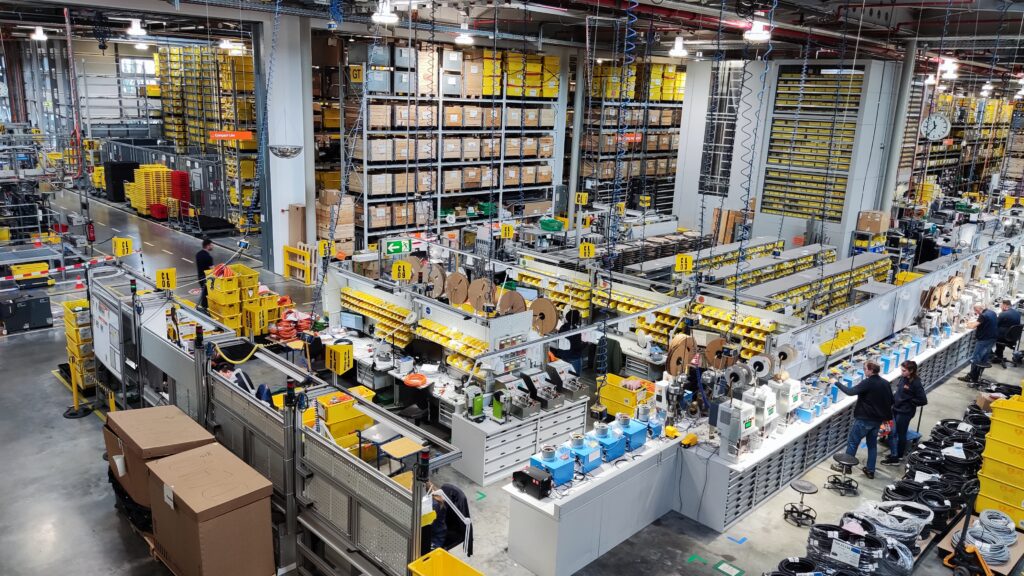
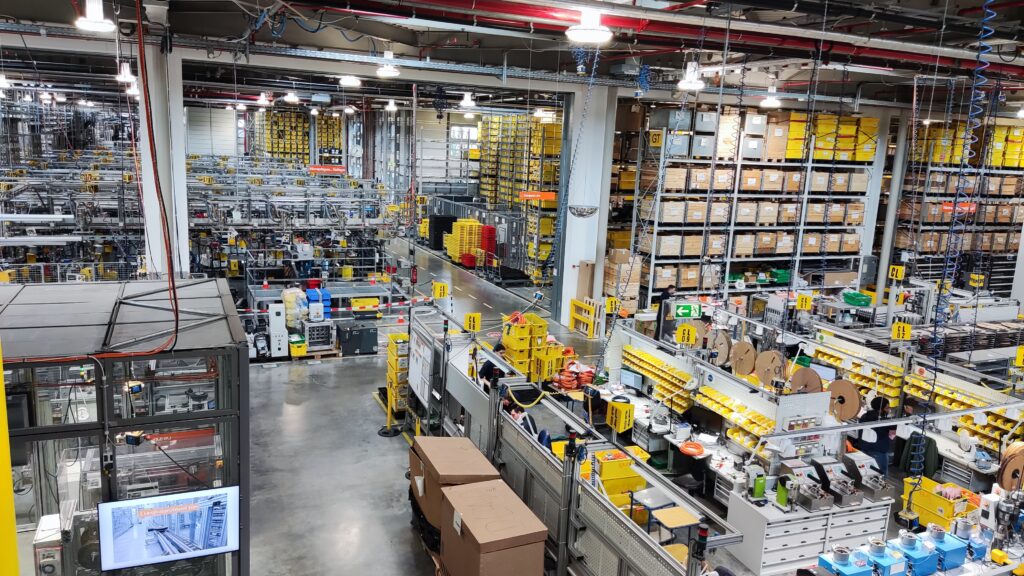
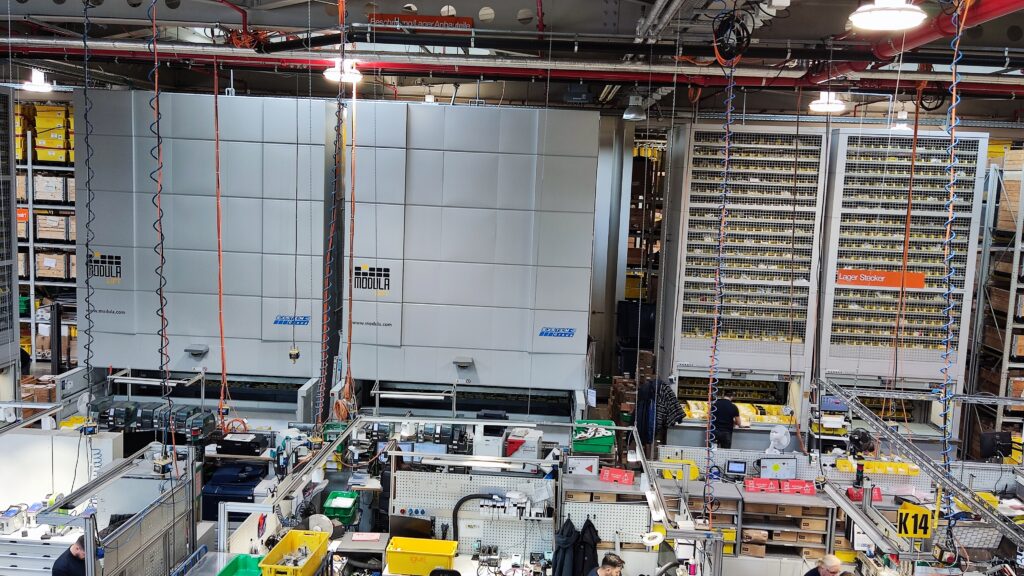

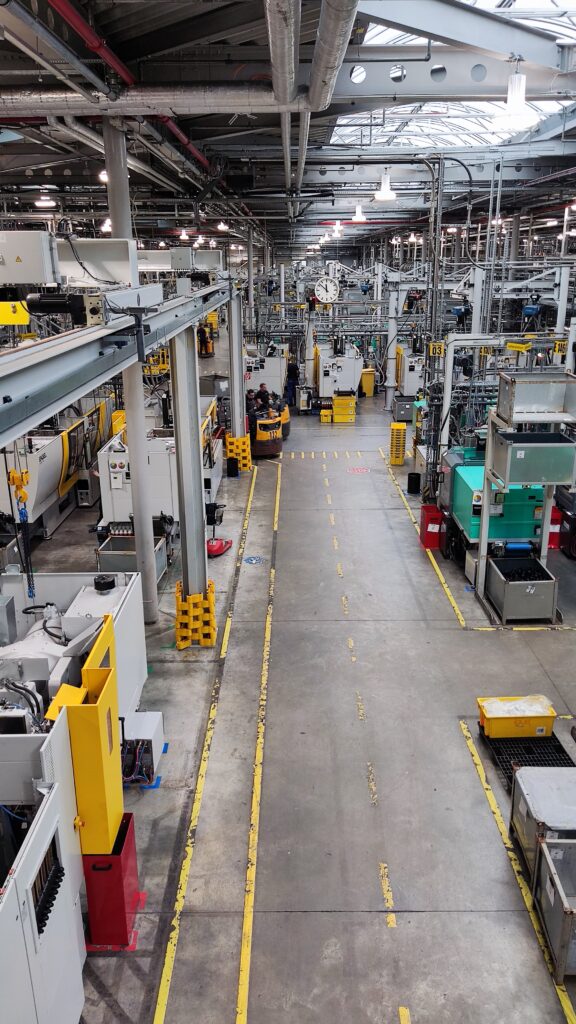
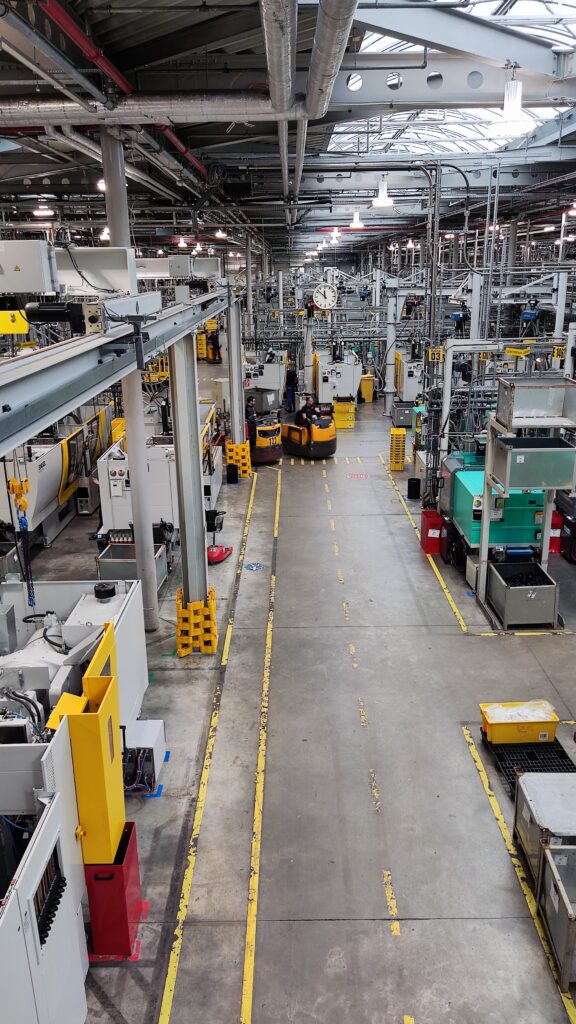
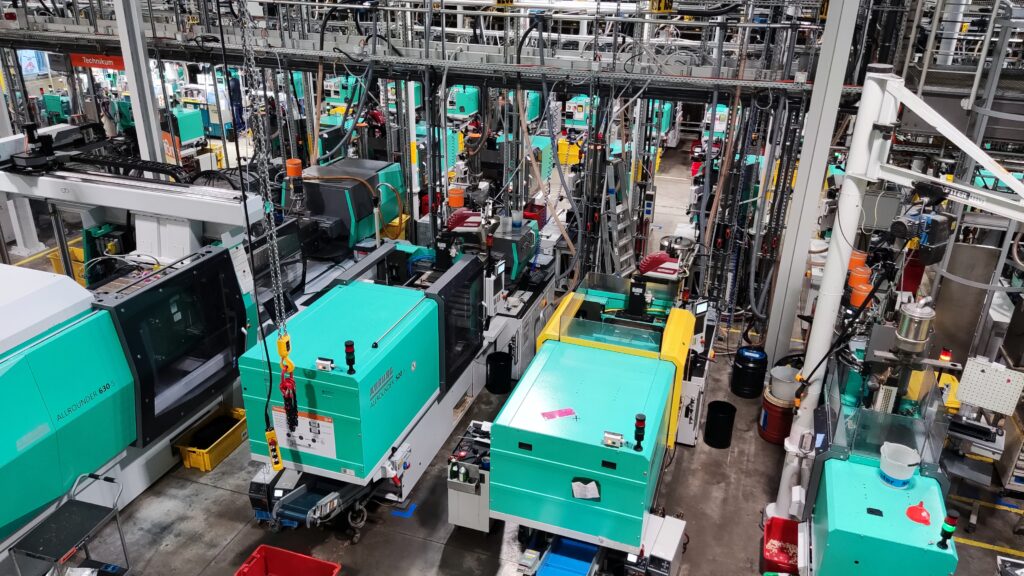
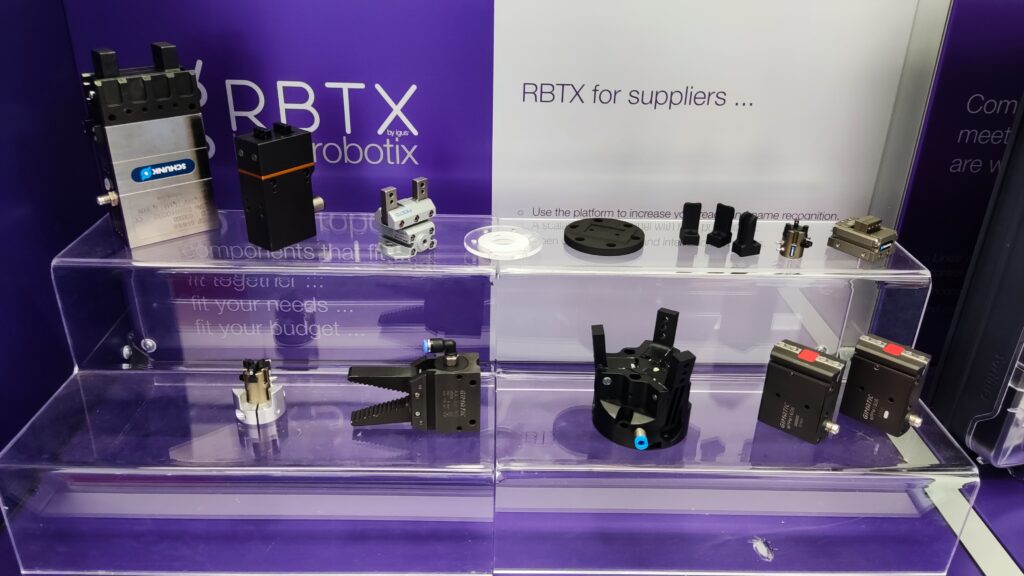
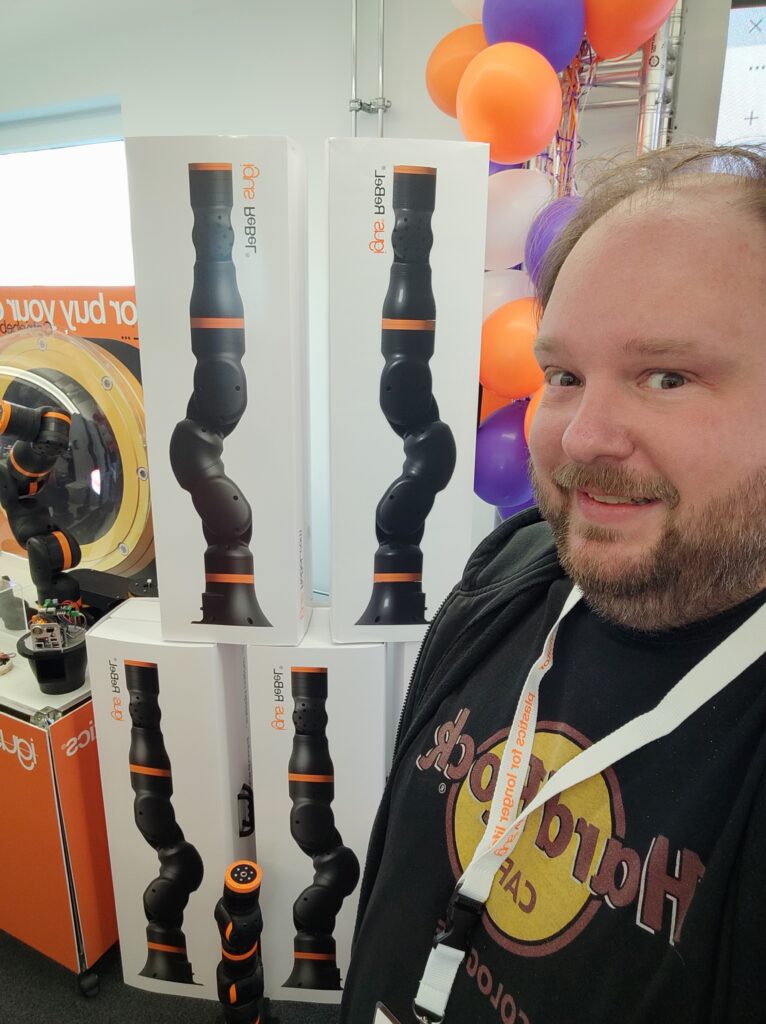
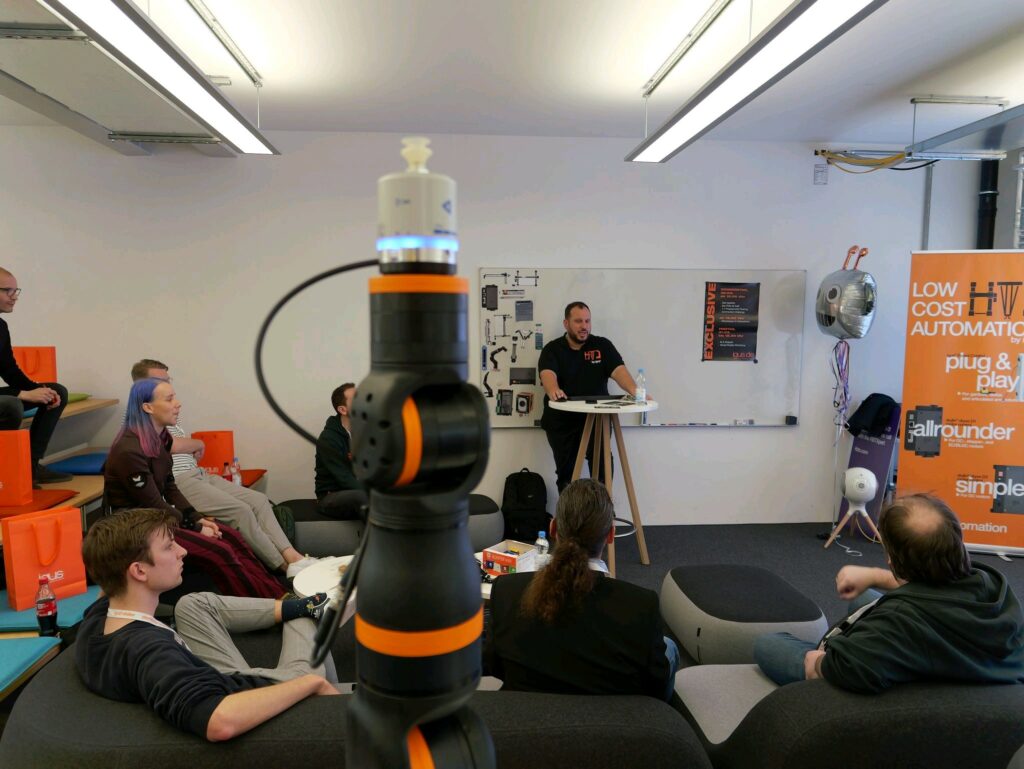
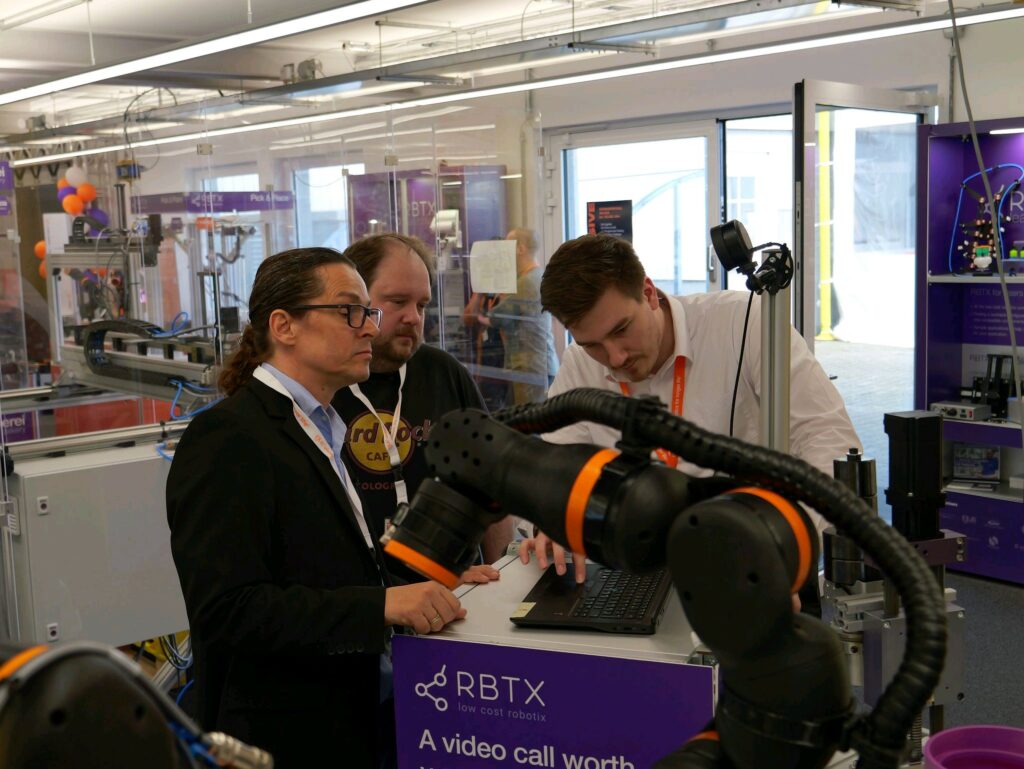
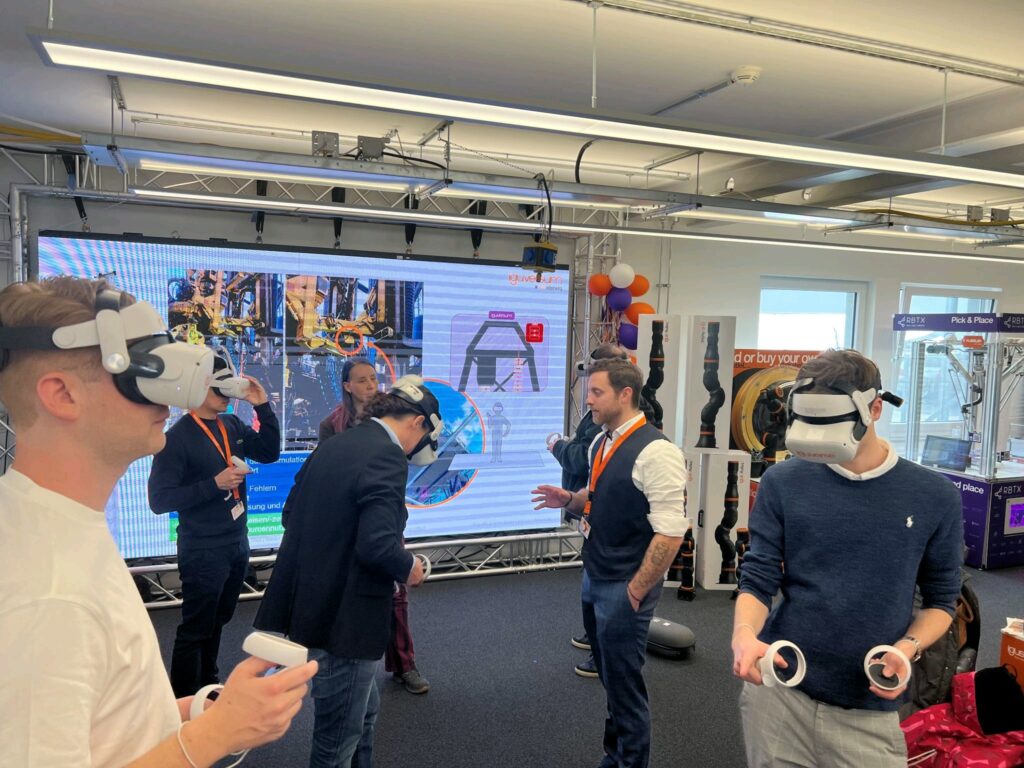
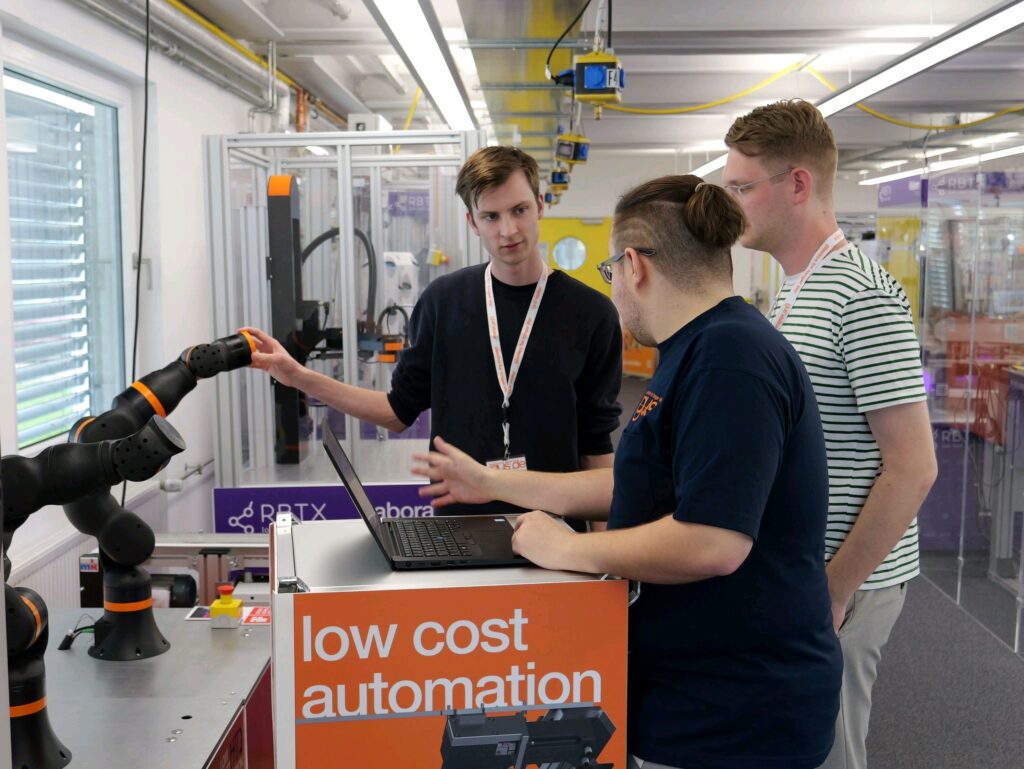
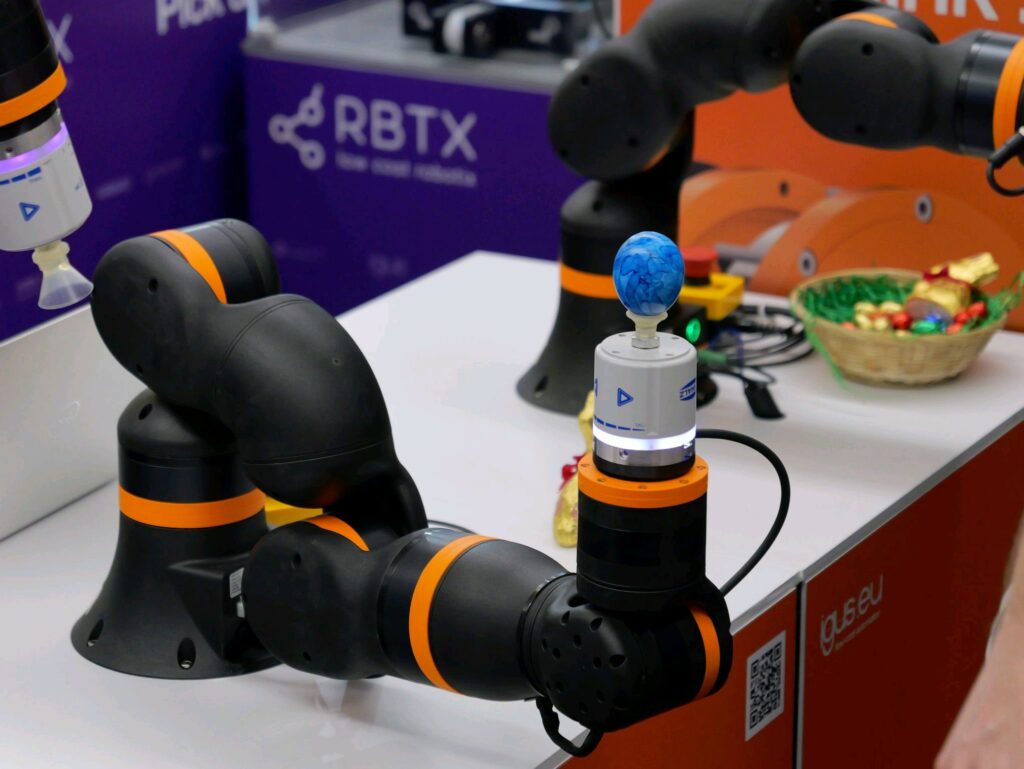
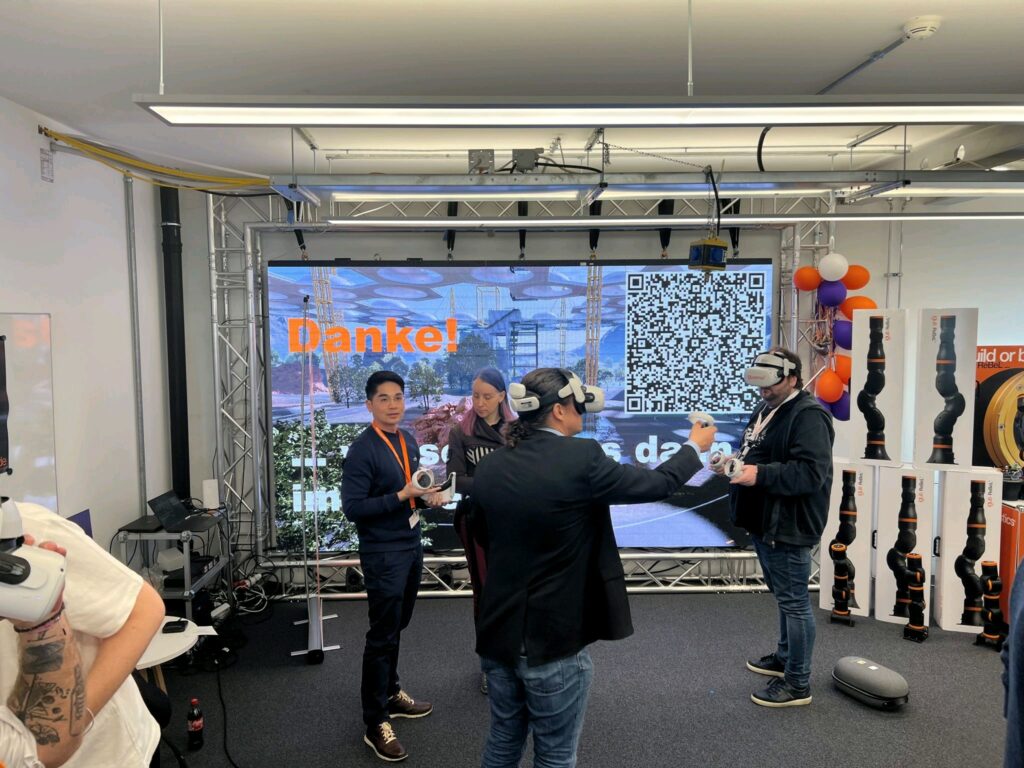
Das Team um das FZI Forschungszentrum Informatik aus Baden-Württemberg hat die ESA-ESRIC Space Resources Challenge gewonnen. Der Preis: 500.000 Euro für die Forschung – und die Aussicht auf eine echte Mission zum Mond. Ein kleiner Schritt für die Forschung, aber ein großer Sprung für das Karlsruher FZI und seine Konsortialpartner.
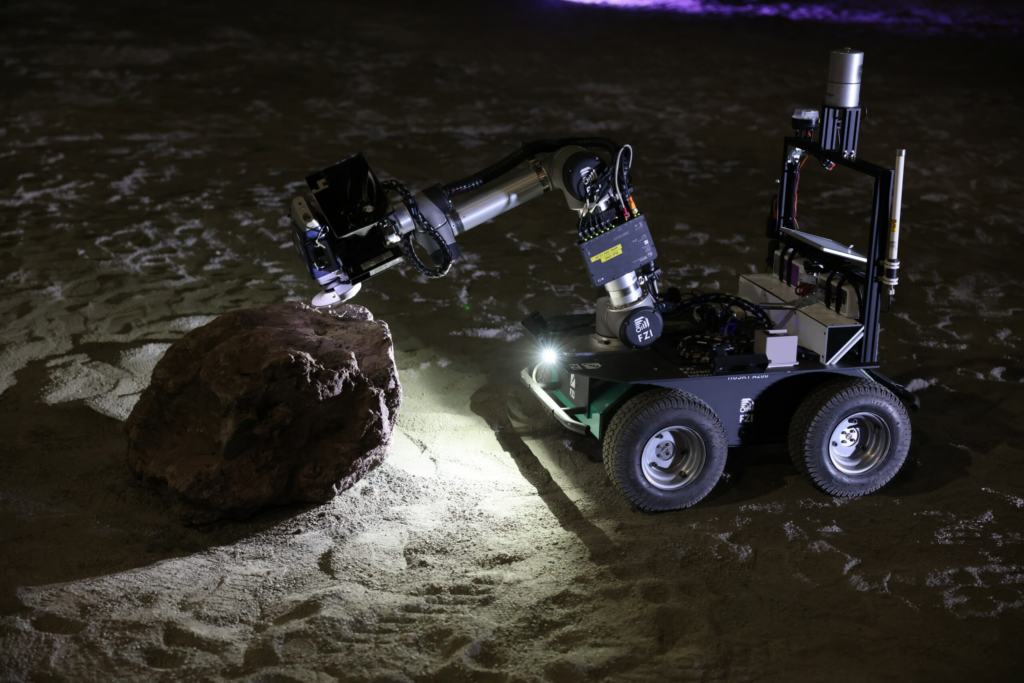
Karlsruhe, 20.04.2023 – Die Europäische Weltraumorganisation (ESA) und das Europäische Innovationszentrum für Weltraumressourcen (ESRIC) haben die Gewinner ihres jüngsten internationalen Robotikwettbewerbs, der ESA-ESRIC Space Resources Challenge, bekannt gegeben. Ziel des Wettbewerbs war es, innovative Ansätze und Lösungen für die Suche und Gewinnung von Ressourcen auf dem Mond zu finden. Gewinner des Wettbewerbs ist das vom FZI angeführte Konsortium ARISE – ein Zusammenschluss von Robotik-, Geologie und Weltraum-Expert*innen des FZI Forschungszentrum Informatik aus Karlsruhe, der Eidgenössischen Technischen Hochschule (ETH) Zürich, Universität Zürich, Universität Basel sowie der Universität Bern. Als Sieger erhält das Konsortium 500.000 € für die weitere Forschung und die Aussicht, Teil einer echten ESA-ESRIC-Mond-Mission zu werden. Die Siegerbekanntgabe fand am 19.04.2023 in Luxemburg im Rahmen der Space Resources Week statt. „Wir sind unglaublich stolz auf unsere talentierten Wissenschaftler*innen. All die Zeit und Mühe, die sie in diese Herausforderung gesteckt haben, wird nun mit diesem tollen Preis belohnt“, zeigt sich FZI-Vorstand Jan Wiesenberger erfreut.
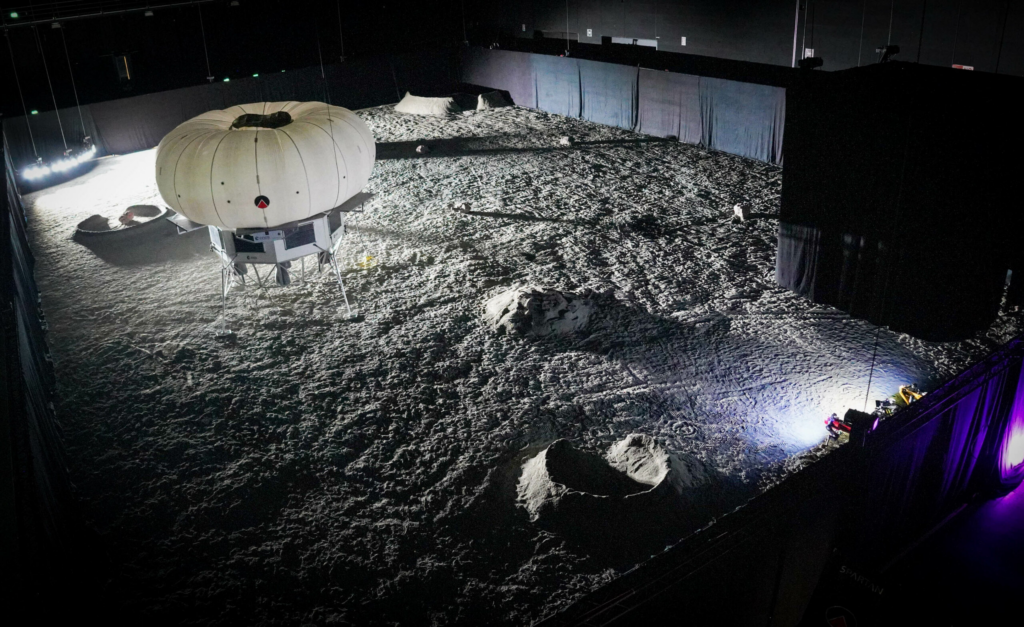
Die ESA-ESRIC Space Resources Challenge ist ein Wettbewerb, bei dem innovative Lösungen für die Erkundung von Ressourcen auf der Mondoberfläche gesucht werden. Der mehrstufige Wettbewerb beinhaltete verschiedene, zum Teil unbekannte Herausforderungen, die mittels mobiler Roboter aus der Ferne, wie später auch auf dem Mond, gelöst werden müssen.
Besonders herausfordernd war die zeitverzögerte und teilweise instabile Kommunikationsverbindung zwischen Mission Control und den Robotern: eine simulierte Einschränkung, wie sie auch bei der Überbrückung der knapp 384.000 Kilometer zwischen Erde und Mond bestehen würde. Ansonsten gab es keinen Sichtkontakt oder Zugriff auf die Robotersysteme.
Die Teams hatten die Aufgabe, eine zuvor unbekannte Mondlandschaft autonom zu explorieren, zu kartographieren und in ihr mit mobilen Robotern zu navigieren. Die Roboter sollten dabei potentielle Ressourcen lokalisieren und genauer untersuchen.
Zu Beginn traten zwölf Teams bei der ersten Phase des Wettbewerbs im Rahmen eines Feldtests in einer mondähnlichen Umgebung in den Niederlanden gegeneinander an. Anhand der dort gezeigten Fähigkeiten wurden fünf Teams ausgewählt, um im Finale erneut anzutreten: das FZI Forschungszentrum Informatik, die ETH Zürich mit der Universität Zürich, Lukasiewicz – PIAP, Mission Control Space Services und die Space Application Services, ein Forschungsverbund der Université Du Luxembourg, Dynamic Imaging Analytics, dem La Palma Research Centre, der Université de Lorraine sowie der Open University.
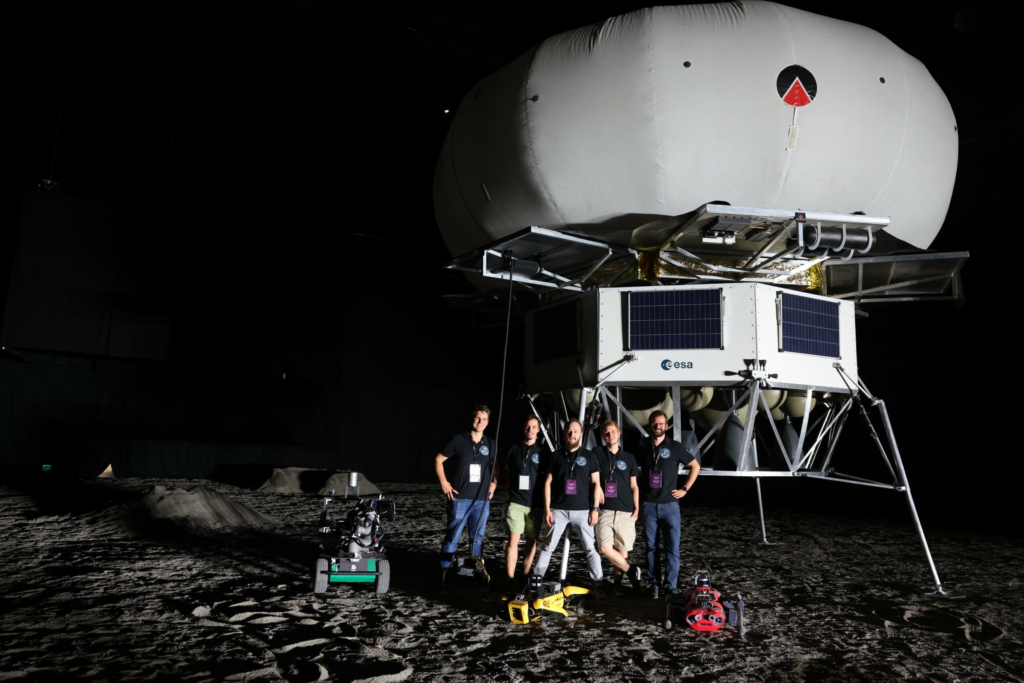
Im Finale stellte sich das FZI den Herausforderungen mit einem Team aus drei mobilen Robotern: den beiden Laufrobotern Spot und ANYmal sowie dem vierrädrigen Roboter Husky mit instrumentiertem Roboterarm. Das Alleinstellungsmerkmal war die vom FZI entwickelte Software, die es dem Dreiergespann ermöglichte, die Aufgaben größtenteils autonom und kooperativ im Team durchzuführen. Die drei Roboter haben sich dabei selbst die Aufgaben je nach Fähigkeiten geschickt aufgeteilt. Die zwei Laufroboter haben schnell das gesamte Gelände exploriert und interessante Ziele für die detaillierte Ressourcen-Analyse für Husky erstellt. Husky konnte dann mittels mitgeführter Geräte Röntgenfluoreszenzanalysen sowie detaillierte Nahaufnahmen durchführen. „Mein persönliches Highlight war, dass ich mir während unseres Wettbewerbsdurchlaufs viel Zeit für Fragen der Jury nehmen konnte, weil unsere Roboter wie geplant keine Eingaben von uns brauchten, sondern autonom agieren konnten.“ so Tristan Schnell, Projektleiter des FZI Teams.
In einem letzten Schritt in Richtung Weltraum mussten die Teilnehmer*innen nach dem Feldtest ein Proposal zur weiteren Steigerung der Weltraumtauglichkeit bei der ESA einreichen. Auf Basis des Feldtests und des Proposals wurde das vom FZI angeführte Konsortium als Sieger gekürt. „Ich freue mich, dass wir zusammen mit den Robotik-Kolleg*innen von der ETH Zürich sowie den weiteren schweizerischen Partnern ein spannendes Konzept entwickeln konnten, bei dem ein Team aus autonomen Laufrobotern die zentrale Rolle spielt. Noch mehr freue ich mich, dass wir jetzt die Chance bekommen, gemeinsam daran zu arbeiten, diese Technologien ein Stück näher zum Mond zu bringen!“ so der Abteilungsleiter Dr.-Ing. Arne Rönnau.
Das Klinikum Bielefeld hat ein modernes Zentrum für roboterassistierte Chirurgie eröffnet.

(lifePR) (Bielefeld, 20.04.2023)
Das Klinikum Bielefeld hat ein modernes Zentrum für roboterassistierte Chirurgie eröffnet, in dem die roboterassistierten Chirurgiesysteme mit den Namen „Da Vinci“ und MAKO© in den Bereichen der Weichteil- und Knochenchirurgie eine wichtige Rolle spielen. Die roboterassistierte Chirurgie ist eine der modernsten Entwicklungen auf dem Gebiet der minimalinvasiven Chirurgie und bietet zahlreiche Vorteile für Patient*innen und Operarteur*innen.
Roboter sind in der Chirurgie zunehmend zu wichtigen Helfern bei komplexen, minimalinvasiven Eingriffen geworden. Die Roboter dienen als verlängerter Arm der Chirurg*innen und ermöglichen höchste Präzision und maximale Sichtgenauigkeit. Der MAKO© Roboterarm wird bereits seit 2018 in der Orthopädischen Klinik des Klinikums Bielefeld – Mitte eingesetzt und erhält nun mit dem Da Vinci Roboter einen „Kollegen“, der zu den modernsten Operationssystemen in Europa gehört. Das Klinikum Bielefeld ist das einzige Haus in Ostwestfalen das sowohl die Weichteil- als auch die Knochenchirurgie roboterassistiert realisiert. Für die Ausstattung des Zentrums für roboterassistierte Chirurgie investierte das Klinikum Bielefeld 10 Mio. Euro.
5,5 Mio. Euro flossen hiervon in den Bau und die Ausstattung zweier neuer Operationssäle, einer davon ist dem Da-Vinci Roboter vorbehalten. Glasscheiben ermöglichen die Einsichtnahme auch während einer Operation: „Dies ist besonders im Hinblick auf unseren universitären Auftrag relevant“, so Ackermann. Durch die Scheiben haben auch Studierende der medizinischen Fakultät der Universität Bielefeld, die einen Teil ihrer Praxisphasen am Klinikum Bielefeld verbringen, die Möglichkeit, die Operation zu verfolgen, ohne direkt im Operationssaal zu stehen. „In Zukunft ermöglicht uns eine Kamera die direkte Übertragung von Operationen in den Vorlesungssaal“, so der Geschäftsführer weiter.
„Wir sind stolz darauf, unseren Patient*innen die neuesten Technologien und die bestmögliche medizinische Versorgung anzubieten. Die Gründung des Zentrums für roboterassistierte Chirurgie OWL ist ein weiterer bedeutender Schritt in die Zukunft als Universitätsklinik“, sagt Michael Ackermann, Geschäftsführer des Klinikums Bielefeld. „Die Robotik ist heutzutage aus dem OP eines Universitätsklinikums nicht mehr wegzudenken“, sagt Dr. Daniel Valdivia, Chefarzt der Klinik für Thoraxchirurgie und der Leiter des Zentrums für roboterassistierte Chirurgie OWL. „Mit der Unterstützung von Robotern wie dem Da Vinci und dem Mako© Roboterarm haben Chirurg*innen Möglichkeiten, die Fähigkeiten des menschlichen Auges und die der menschlichen Hand noch zu übertreffen. Die roboterassistierte Chirurgie bietet viele Vorteile für unsere Patient*innen wie kleinere Schnitte, verkürzte Operationszeiten, weniger Blutungen, geringere Infektionsraten, weniger Komplikationen und weniger postoperative Schmerzen.“
Der Da Vinci Roboter wird am Klinikum Bielefeld künftig bei thoraxchirurgischen Eingriffen sowie bei allgemein- und viszeralchirurgischen Indikationen, bei gynäkologischen Eingriffen als auch bei Eingriffen der Hals-, Nasen-, Ohrenheilkunde eingesetzt. Gleich mehrere Operateur*innen aus diesen Bereichen haben bereits die Schulung durchlaufen, die zur Anwendung des Da-Vinci Roboters nötig ist.
Das Gerät besteht aus drei Komponenten. An der Konsole sitzt der/die Operateur*in und steuert mit Joysticks und Pedalen die Instrumente sowie die Kamera, die dem/der Operateur*in durch 10-fache Vergrößerung und der 3-D-Sicht einen optimalen Blick auf das OP-Feld ermöglicht. Der Turm oder auch Videosystemwagen ist das Herz des Da Vinci, denn hier wird das Bild der endoskopischen Kamera übertragen, die durch einen sogenannten Trokar, durch den für die OP-Instrumente ein Zugang zur Körperhöhle geschaffen wird. So hat das OP-Personal die Möglichkeit, jeden „Handgriff“ des/der Operateur*in und des Da-Vincis zu verfolgen. Der Patientenwagen hat vier Arme, an denen die OP-Instrumente durch den/die Operateur*in an der Konsole gesteuert werden. Durch einen Zitterfilter und sieben Freiheitsgrade ermöglicht das System eine intuitive Bedienung der Instrumente über die Joysticks.
Das Zentrum für roboterassistierte Chirurgie OWL wird auch eine wichtige Rolle bei der Ausbildung von Studierenden in der medizinischen Praxis spielen und die Zukunft der medizinischen Versorgung mitgestalten. Es bietet Chirurg*innen die Möglichkeit, ihre Fähigkeiten und ihr Wissen zu erweitern und stellt eine bedeutende Erweiterung der klinischen Dienstleistungen des Klinikums dar.
Weitere Informationen unter: https://www.klinikumbielefeld.de/zentrum-fuer-roboterassistierte-chirurgie-owl.html
Sebastian Trella from Robots-Blog had the opportunity to conduct a short interview with Roy Barazani from „the OffBits“.
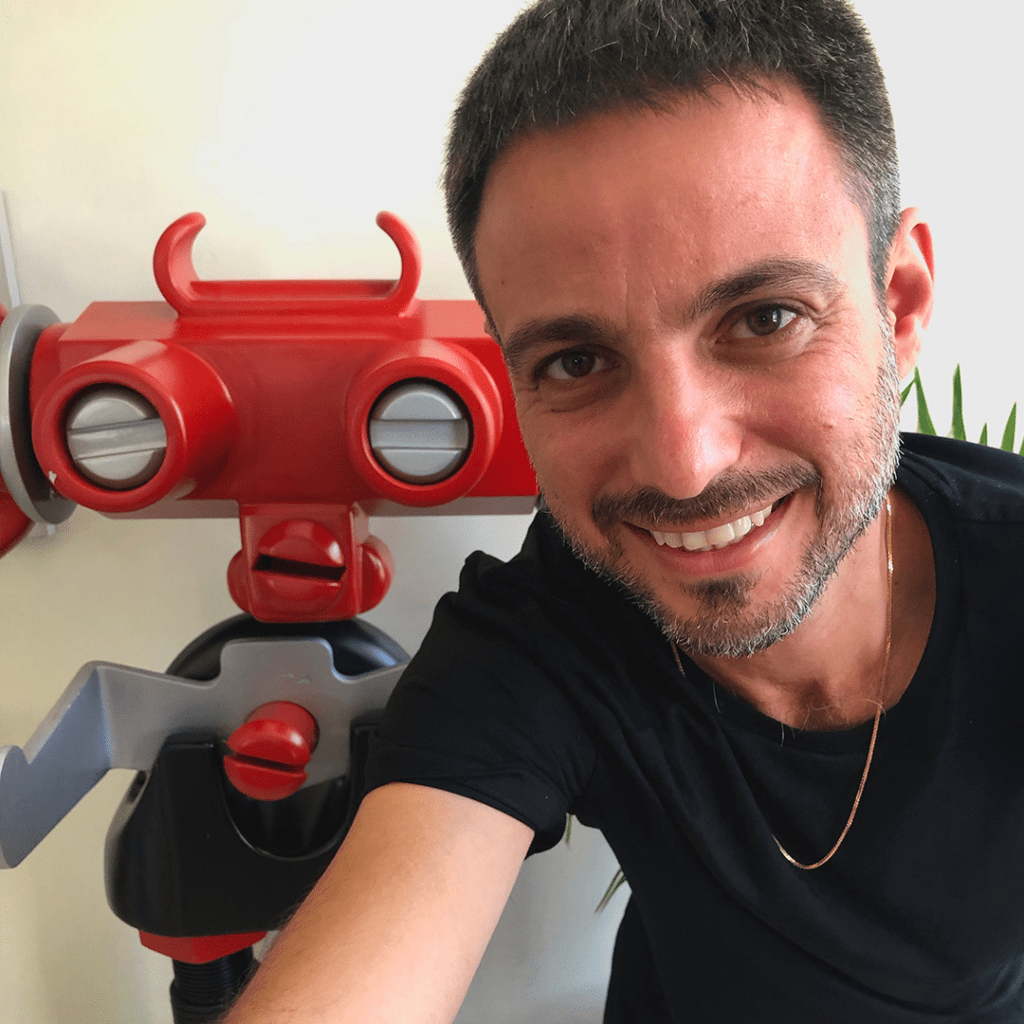
· Robots-Blog: Who are you and what is your job at the OffBits?
Roy: I am Roy Barazani – The OffBits founding father
· Robots-Blog: What inspired you to create the OffBits toy?
Roy: I guess I’ve always been fascinated by the idea of re-design. Even as a child I used to break my toys apart and try to rebuild them in new and different ways. Looking back, this allowed me to develop my imagination and ability to fantasize.
· Robots-Blog: How did you come up with the name „the OffBits„?
Roy: The OFFBITS started out by playing with random parts I found in my toolbox while working on an exercise before starting my design studies in college. Suddenly I found I had made a little robot! I kept this idea with me during my studies, and for my final project built a whole city of them made from recycled parts. It was really well received and I knew I had a great idea in my hands. It took a few years of development and testing in Maker Faire events and boutique design stores and now I finally feel they are ready for the world.
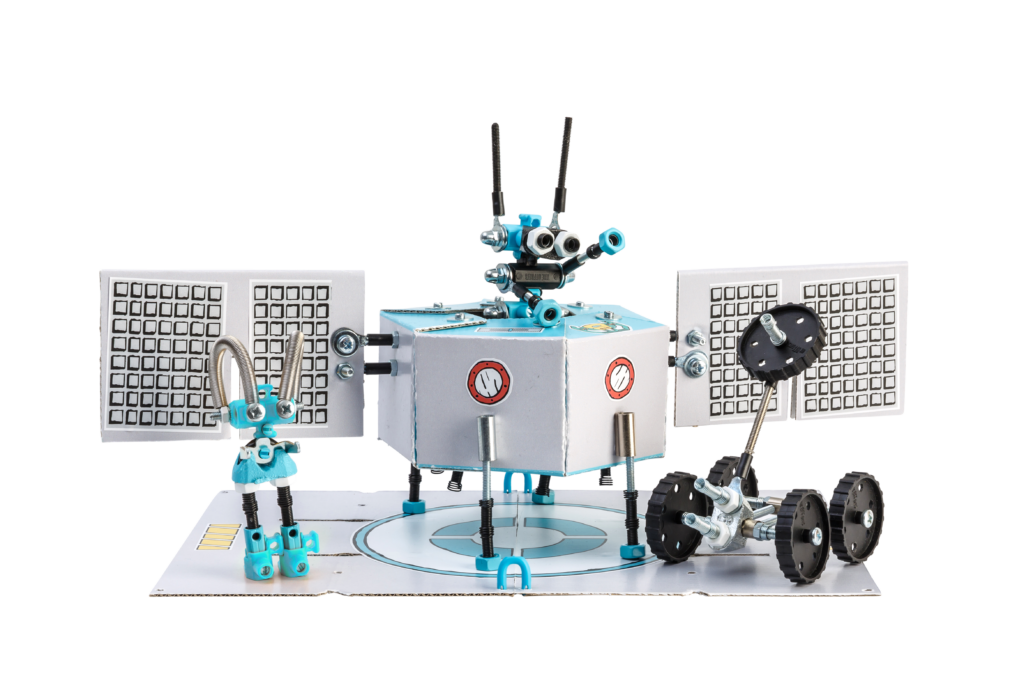
· Robots-Blog: Do you have a lot to do with robots in your job/everyday life?
Roy: Yes, I love robots and I have collected robots for years!
· Robots-Blog: How did sustainability factor into the creation of the OffBits?
Roy: I see The OFFBITS as a new way of playing with toys, an “open-source” platform with no rules, so each creation can be as unique as the one who built it. I love the way people can take the original design and then make something completely different. Also, the fact it is made of components we all have around us means there are no cost or availability limits to what people can do with them.
Offbits are a sustainable and eco-friendly educational toy that encourages zero-waste principles and practices through a fun and interactive experience. It’s a great way to bring awareness and inspire positive actions in preserving the environment.
We don’t think you need many toys, but what you do choose should be made to last.
The possibilities are endless with The Offbits, you can create anything from a simple robot to a complex model while using sustainable materials and reducing waste.
· Robots-Blog: And which is your favorite robot from the OffBits?
Roy: I love all my robots family!
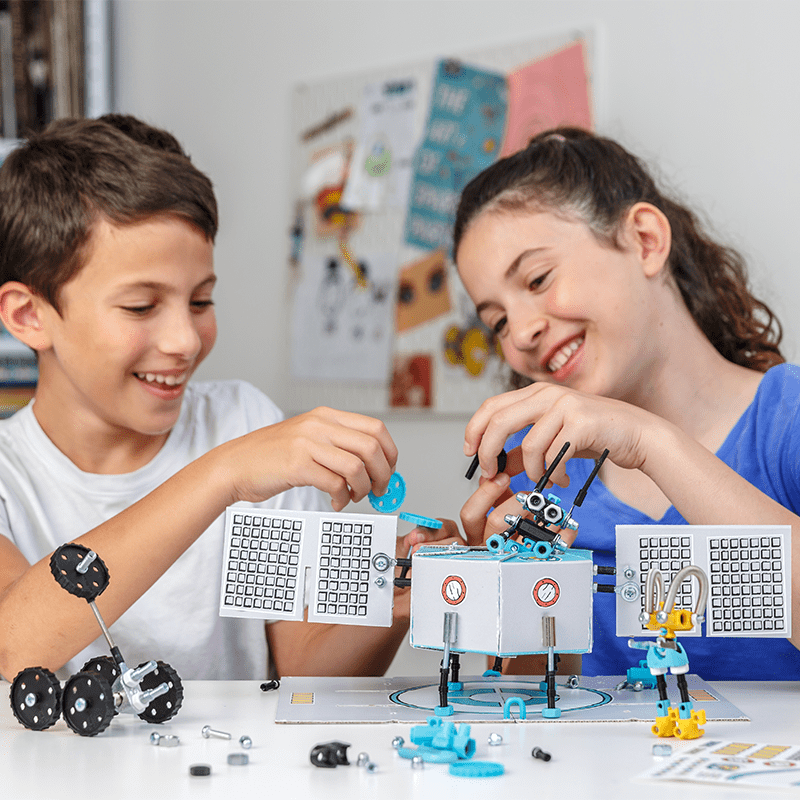
· Robots-Blog: Can you tell us about any challenges you faced while designing the OffBits?
Roy: From a design perspective, working with standard hardware components brought many unique challenges. For example, choosing the right mix of bits in the kits (both functionally and aesthetically) required a lot of trial-and-error type work, and then of course there is the issue of connecting parts that weren’t designed to fit together.
· Robots-Blog: How do you envision the OffBits evolving in education fields?
Roy: This is a S.T.E.A.M toy helping young minds grow in the fields of Science, Technology, Engineering, Art and Math. The OffBits toys encourage the development of fine motor skills, spatial reasoning, problem-solving, and imaginative play.
The hands-on building process allows users to learn about robotics and engineering concepts in a fun and interactive way. The step-by-step instructions for building and programming the Offbits kits, making it easy for users of all ages to understand the principles behind the technology.
The OffBits offer educational resources such as workshops, online tutorials, and educational material that could help kids to learn about sustainable practices and technologies.
· Robots-Blog: What can you tell us about your community?
Roy: The Offbits community feature allows users to share their creations and ideas, providing inspiration and a sense of collaboration. The Offbits users have challenges for every level. When they create, share and pass the challenge they can earn tokens for their future purchases.
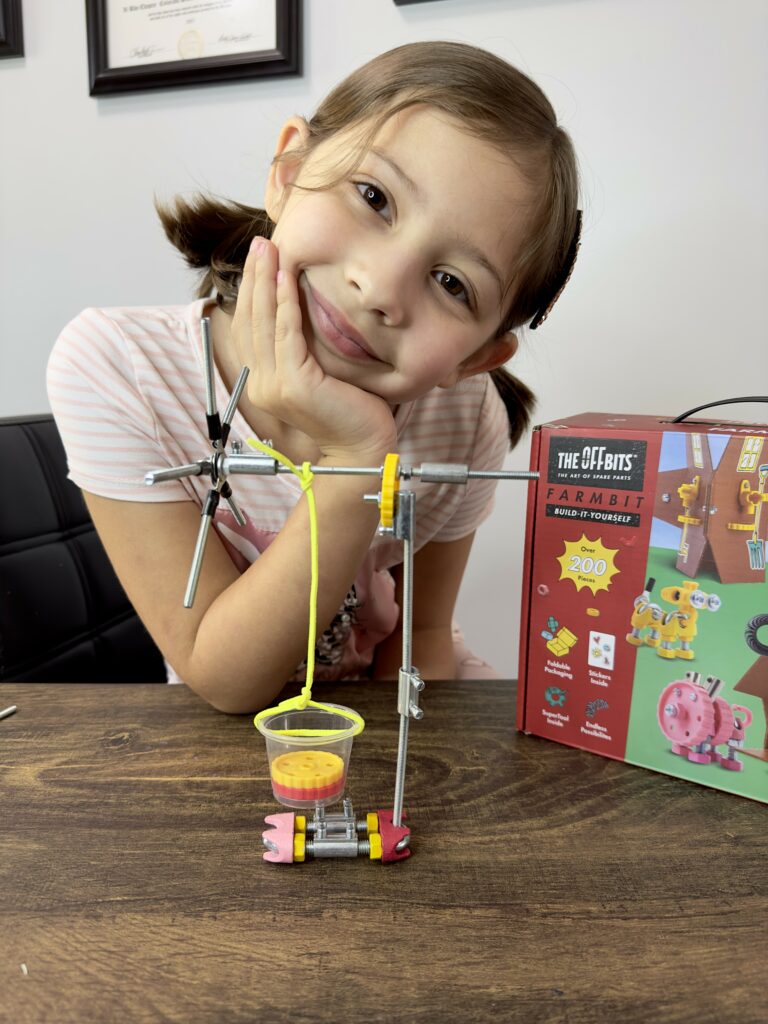

Cyberport, einer der größten europäischen Händler für Consumer Electronics und Teil von Hubert Burda Media, bietet seinen Kund:innen ab dem 3. April 2023 mit dem Robotik-Konzept „StoreDouble“ einen innovativen Beratungsservice an. Mithilfe des neuen Telerobotik-Services können Kund:innen sich nun auch virtuell von Zuhause durch den Cyberport-Store bewegen und von den Technikexpert:innen beraten lassen – so als wären sie vor Ort. Cyberport ist der erste Elektronik- und Technik-Shop in der DACH-Region, der einen solchen Service für seine Kund:innen anbietet.

Bei dem Cyberport-StoreDouble handelt es sich um den Telepräsenzroboter Double 3 des US-amerikanischen Herstellers Double Robotics, mit dem ein freies Interagieren – Bewegung, Sehen, Sprechen – über räumliche Distanzen möglich ist.
Kund:innen können auf der Cyberport-Website einen Termin buchen und erhalten per Emailbestätigung einen Link, über den sie sich zum vereinbarten Zeitpunkt mit dem StoreDouble verbinden können. Mithilfe des Roboters können sie sich dann virtuell im Store bewegen und von einem Cyberport-Technikexpert:in beraten lassen. Die gewünschten Produkte können direkt über den Service gekauft und im Store abgeholt oder nach Hause geliefert werden.
Der Roboter-Service wird vorerst in den Cyberport-Stores in Berlin Mitte und Wien Citygate angeboten. Je nach Kundennachfrage wird er in der Zukunft auch in weiteren Stores verfügbar sein. Weitere Informationen zum neuen Robotik-Service finden Sie hier.
Sind Sie ein Fan von intelligenten Robotern und künstlicher Intelligenz? Die Firma Robosen hat vor kurzem angekündigt, dass der Flagship Optimus Prime Roboter bald in Deutschland erhältlich sein wird. Das ist eine besonders gute Nachricht für alle Transformers-Fans, die schon immer davon geträumt haben, einen eigenen Optimus Prime Roboter zu besitzen. Bei dieser neuen Version handelt es sich außerdem um den weltweit ersten automatisch transformierbaren Optimus Prime. Robosen Flagship Optimus Prime ist ein hochkomplexes und interaktives Roboterspielzeug, das die ikonische Figur aus der Transformers-Franchise imitieren soll. Weitere Informationen finden Sie hier auf robots-blog.com und auf der Robosen-Website.
Was ist das Robosen Flagship Optimus Prime Roboter Modell?
Der Robosen Flagship Optimus Prime ist ein atemberaubender Roboter, der auf der kultigen und wohl auch berühmtesten Transformers-Figur basiert. Der Roboter ist in der Lage, sich von einem fahrenden LKW in einen Roboter zu verwandeln und ist mit einer Vielzahl von intelligenten Funktionen ausgestattet. Er ist 48,3cm groß, 2,8 kg schwer und aus hochwertigen Komponenten gebaut, die stark und langlebig sind. Das Roboterspielzeug besteht aus mehr als 5.000 Teilen, darunter 60 Mikrochips und 27 Servomotoren, die ihm seine ausgeklügelten Fähigkeiten verleihen.
Der Roboter ist mit fortschrittlicher Technologie ausgestattet, die ihm eine Vielzahl von Fähigkeiten verleiht. Zum Beispiel kann er durch einfache Sprachbefehle gesteuert werden, um sich zu bewegen oder bestimmte Aktionen auszuführen. Über einen eingebauten Lautsprecher kann der Spielzeugroboter Musik und Soundeffekte abspielen, was das realistische Erlebnis noch verstärkt.
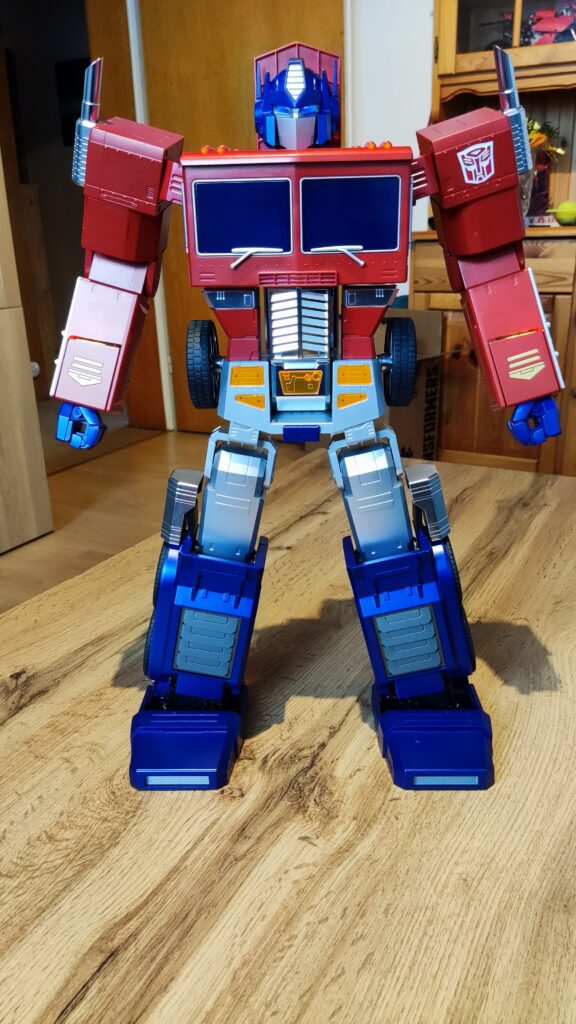
Darüber hinaus verfügt der Roboter über ein fortschrittliches Bewegungssystem, mit dem er sich auf einzigartige Weise bewegen kann. Der Roboter kann sich auf beiden Beinen oder seinen Rädern bewegen und ist in der Lage, schnelle Bewegungen und komplexe Choreografien auszuführen. Robosen Flagship Optimus Prime wird von einem wiederaufladbaren Akku angetrieben, der mit einer einzigen Ladung bis zu 4 Stunden Spielzeit bietet.
Transformations-Mechanismus
Eines der auffälligsten Merkmale des Robosen Flagships Optimus Prime ist sein Verwandlungssystem. Er transformiert sich mithilfe eines komplexen Motorsystems, das schnelle und präzise Bewegungen ausführen kann, von einem Roboter in ein Fahrzeug und umgekehrt. Er ist einer der schnellsten Transformationsroboter auf dem Markt, denn die vollständige Verwandlung dauert nur 5 Sekunden. Fortschrittliche Algorithmen ermöglichen es Optimus Prime, auf zwei Beinen zu laufen.
Sprachgesteuertes System
Immersive Sprachbefehle ermöglichen die Interaktion mit dem Robosen Flagship Optimus Prime, der eine Vielzahl von Sprachbefehlen verstehen und ausführen kann. Durch das Aussprechen von Befehlen wie „Transform“, „Roll out“ oder „Attack“ können die Benutzer das Roboterspielzeug steuern. Das Sprachbefehlssystem ist sowohl für Kinder als auch für Erwachsene eine hervorragende Funktion, da es einfach zu bedienen und unglaublich reaktionsschnell ist.
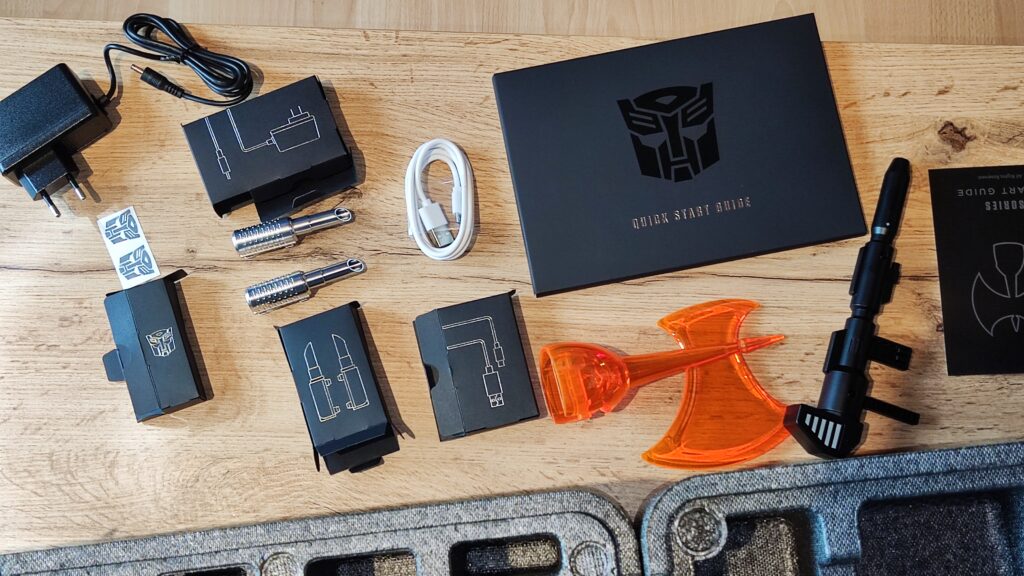
Was sind die Hauptmerkmale des Robosen Flagships Optimus Prime?
Robosen Flagship Optimus Prime verfügt über eine Vielzahl von Funktionen, die ihn zu einem faszinierenden und unterhaltsamen Roboter machen.
Zu den wichtigsten Funktionen gehören:
– Intelligente Steuerung (sprachgesteuert): Der Roboter kann durch einfache Sprachbefehle gesteuert werden, um sich zu bewegen oder bestimmte Aktionen auszuführen.
– Smartphone-App (Fernsteuerung): Der Roboter verfügt über eine eigene App, mit
der der Benutzer verschiedene Einstellungen und Funktionen anpassen kann. Optimus Prime kann über die App ferngesteuert oder programmiert werden.
– Bewegungssystem: Der Roboter ist mit einem fortschrittlichen Bewegungssystem ausgestattet, mit dem er sich auf einzigartige Weise bewegen kann.
– Programmierbare Funktionen: Der Roboter kann von den Benutzern programmiert werden, um bestimmte Bewegungen und Aktionen auszuführen. Die erstellten Programme/Bewegungsabläufe können dann mit anderen Benutzern geteilt werden, um die Funktionen für alle Benutzer zu erweitern.
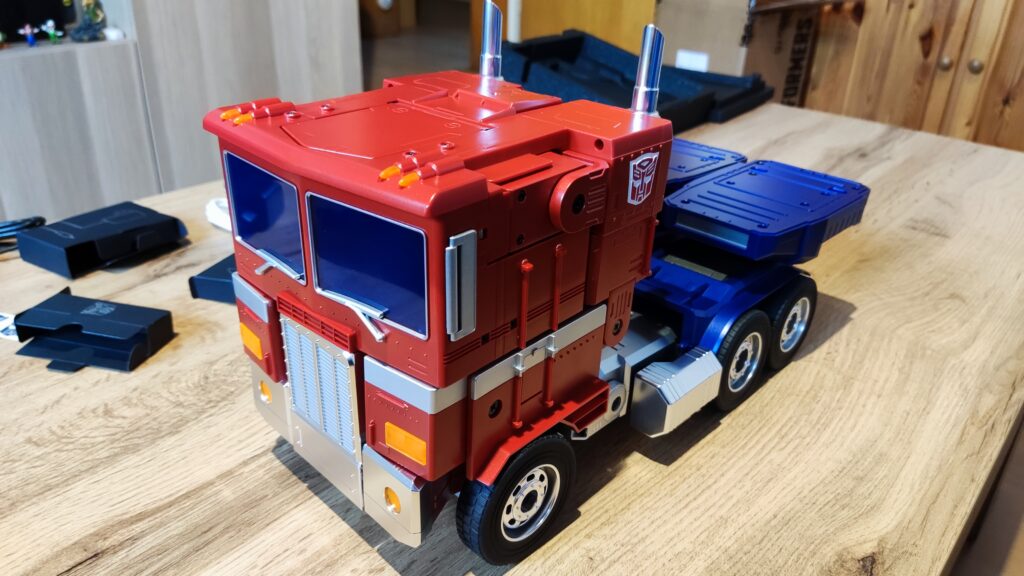
Was können Sie mit der zugehörigen Smartphone-App tun?
Verbinde die App mit dem Robosen Optimus Prime-Roboter, um Optimus Prime zum Leben zu erwecken, während du programmieren lernst und ein immersives Erlebnis genießt. Lass Optimus Prime auf Ausflüge gehen, Filmszenen nachspielen oder fordere ihn heraus, verschiedene Aufgaben und Herausforderungen anzunehmen. Durch das Abschließen von Missionen in der App werden zusätzliche Funktionen für Optimus Prime freigeschaltet, was zu einem noch interaktiveren Spielerlebnis führt. Du kannst dir auch Videos in der App ansehen, um coole Aktionen von Optimus Prime zu sehen und dich davon inspirieren zu lassen, was andere Programmierer mit ihren Optimus Prime-Robotern machen. Die Smartphone-App ist bereits jetzt für IOS und Android erhältlich.
Vergleich mit anderen Transformers-Spielzeugen auf dem Markt
Robosen Flagship Optimus Prime hebt sich von anderen Transformers-Spielzeugen auf dem Markt durch seine fortschrittlichen Eigenschaften und Funktionen ab. Es gibt zwar andere Transformers Spielzeugroboter, aber keiner von ihnen bietet das gleiche Maß an Interaktivität und Kontrolle wie Robosen Flagship Optimus Prime. Das Sprachsteuerungssystem, die Elemente der mobilen App und die lizenzierten Geräusche und Stimmen aus den Filmen machen es zu einem einzigartigen und fesselnden Spielzeug, das ein intensives und interaktives Erlebnis für die Benutzer bietet.
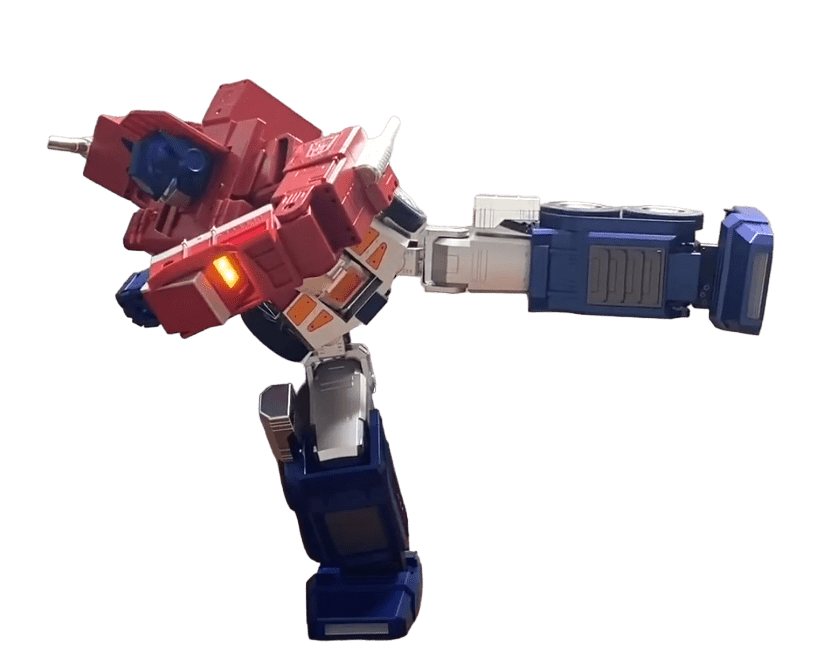
Wo kann man den Robosen Flagship Optimus Prime kaufen?
Das Robosen Flagship Optimus Prime wird in Kürze in Deutschland für 999€ erhältlich sein. Interessierte können den Roboter direkt auf der Robosen-Website bestellen. Robosen Robotics hat auch Interesse gezeigt, mit seiner Robotertechnologie in neue Bereiche vorzudringen, unter anderem in den Bildungsbereich. Es wird spannend sein zu sehen, wie das Unternehmen in Zukunft Innovationen und neue Produkte entwickelt.
Erwecke den epischen Kampf zwischen den Autobots und den Decepticons zum Leben mit dem Robosen Flagship Optimus Prime, dem ultimativen transformierenden Roboterspielzeug. Mit seinen fortschrittlichen Funktionen, seiner Interaktivität und seinem Reaktionsvermögen bietet er ein einzigartiges und fesselndes Erlebnis für alle Altersgruppen. Lassen Sie sich dieses einzigartige Spielzeug nicht entgehen und holen Sie es sich noch heute!

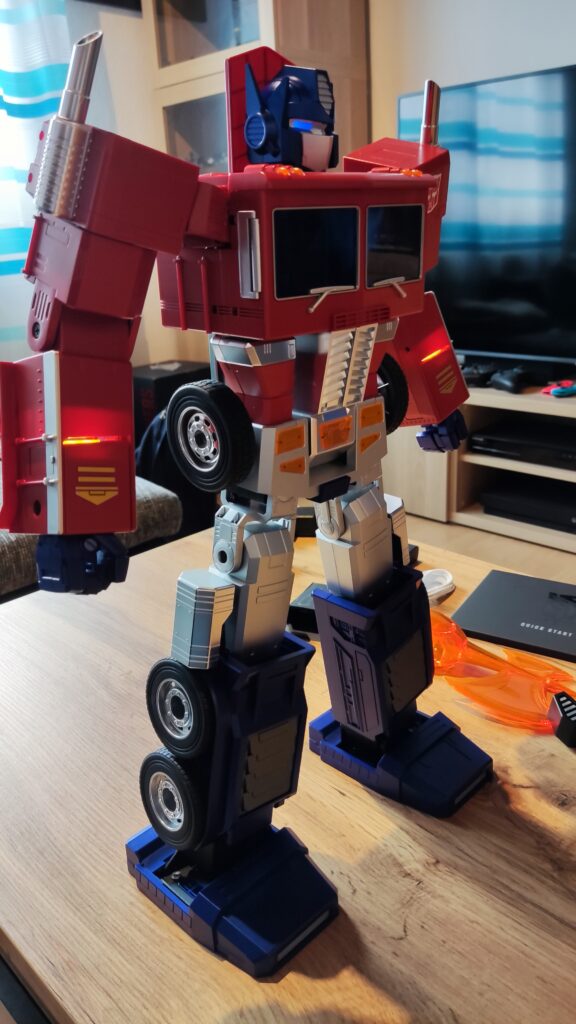
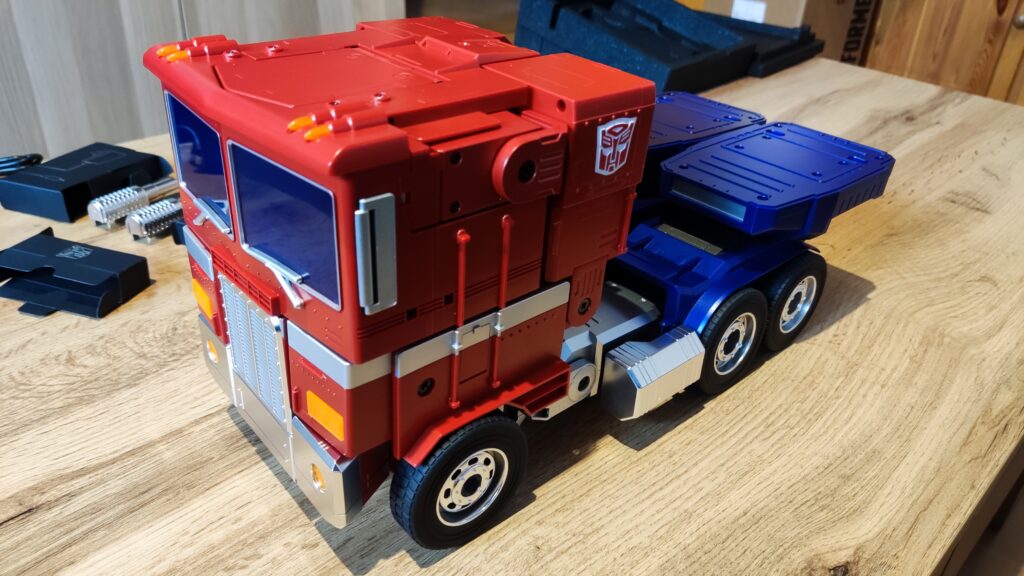
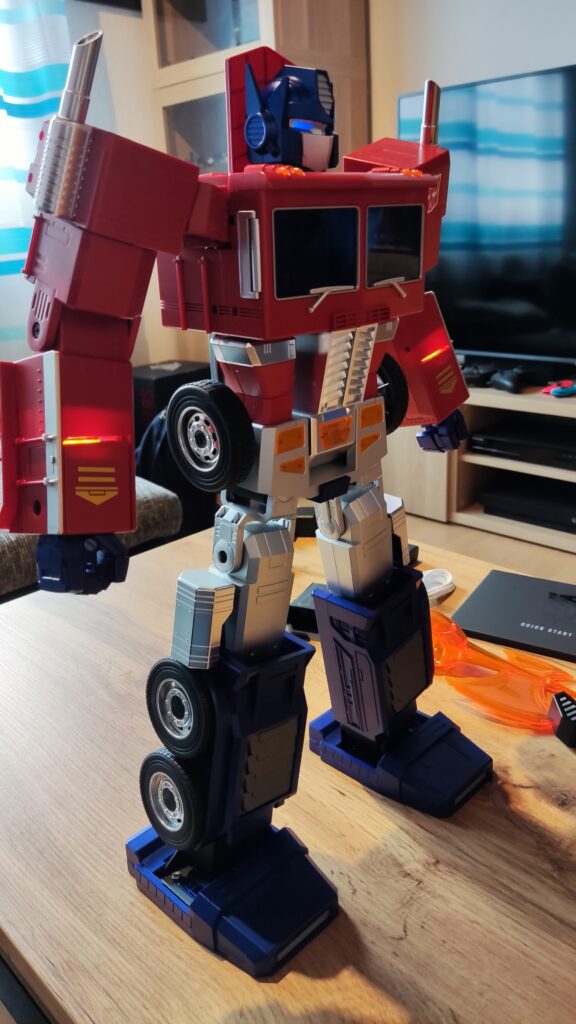
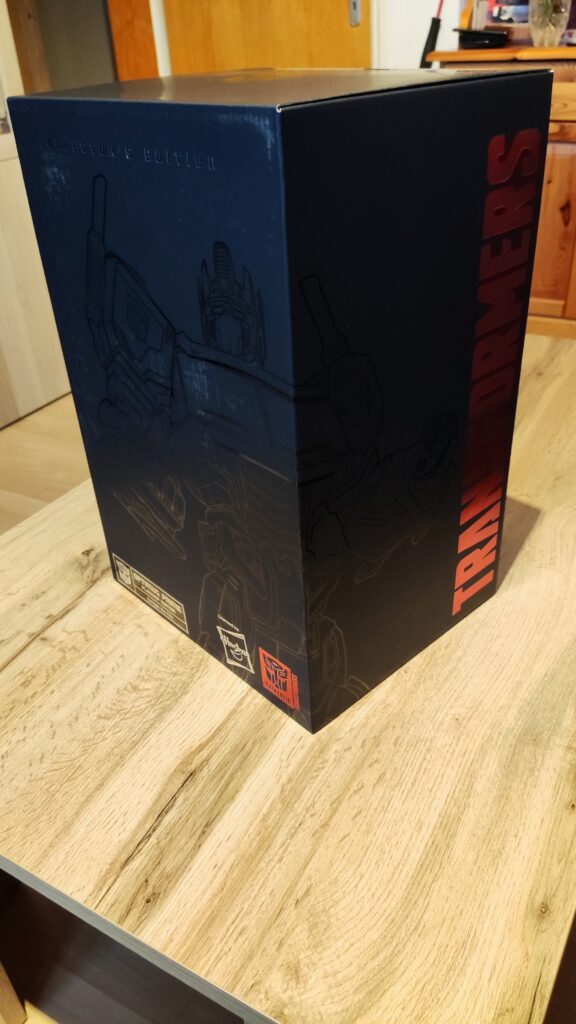
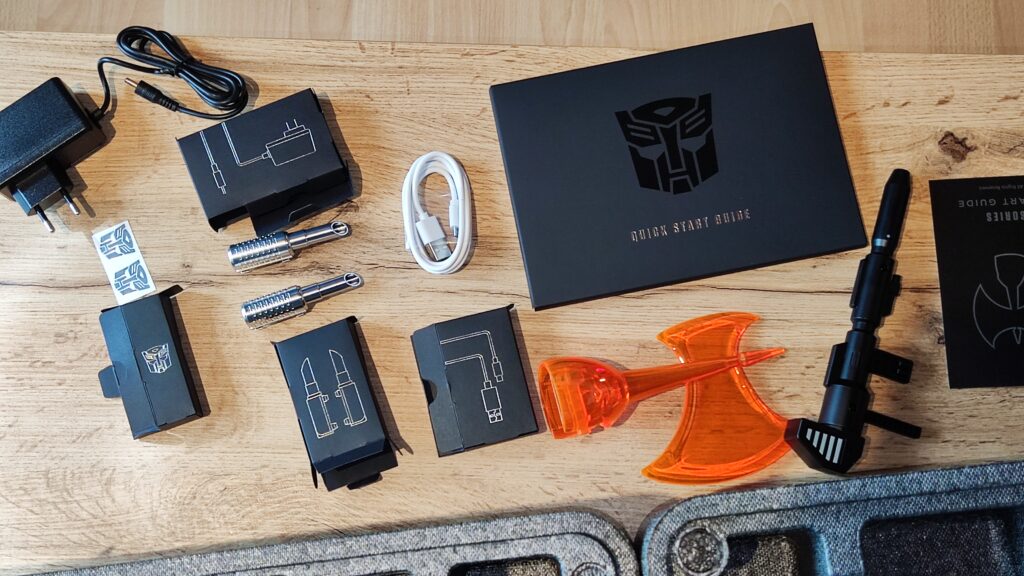
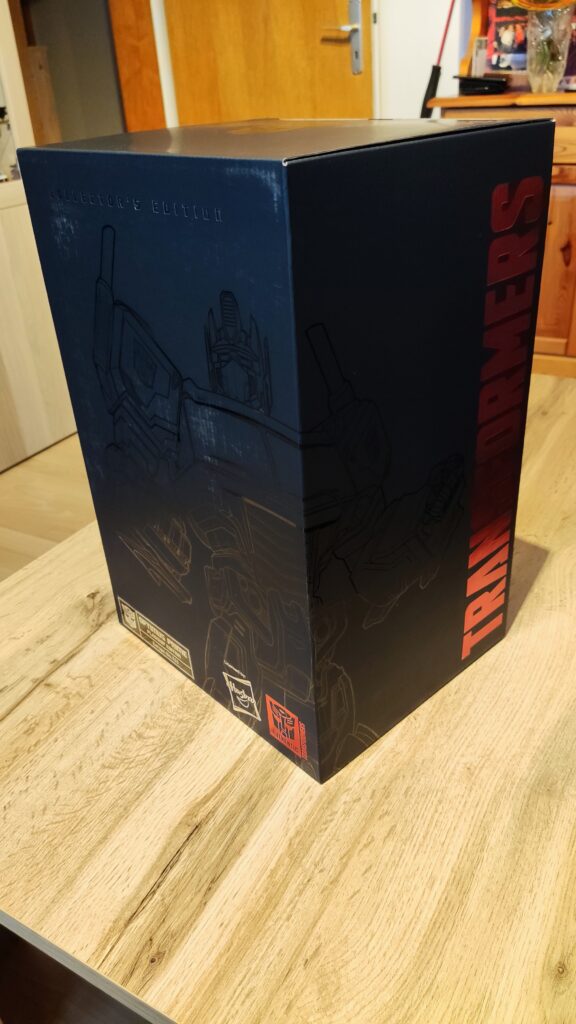
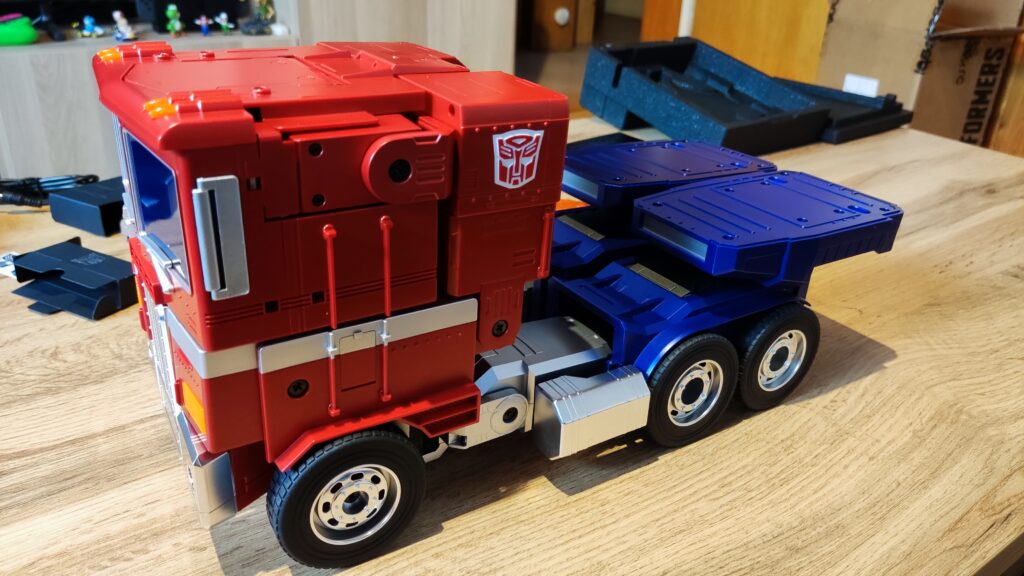
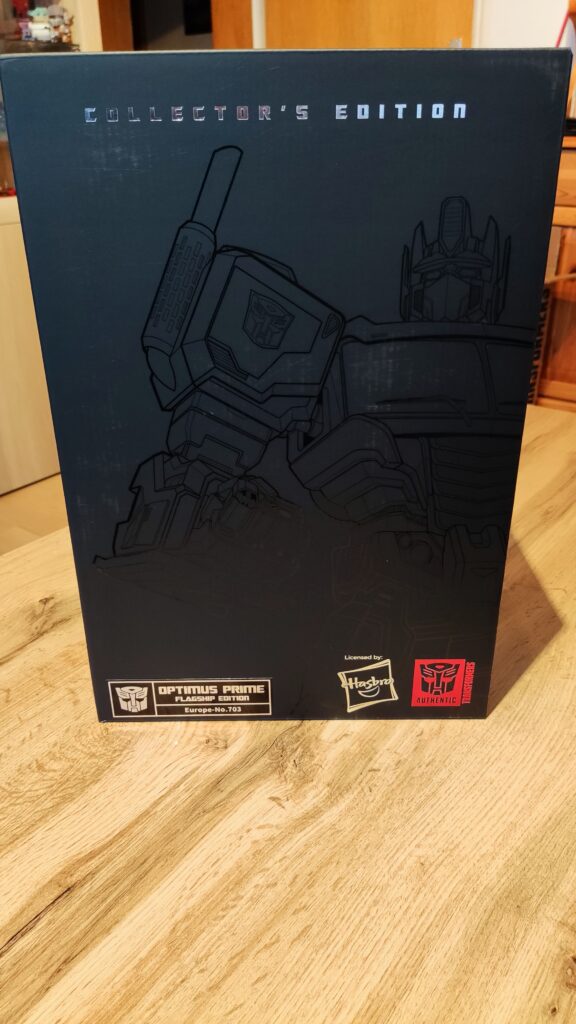
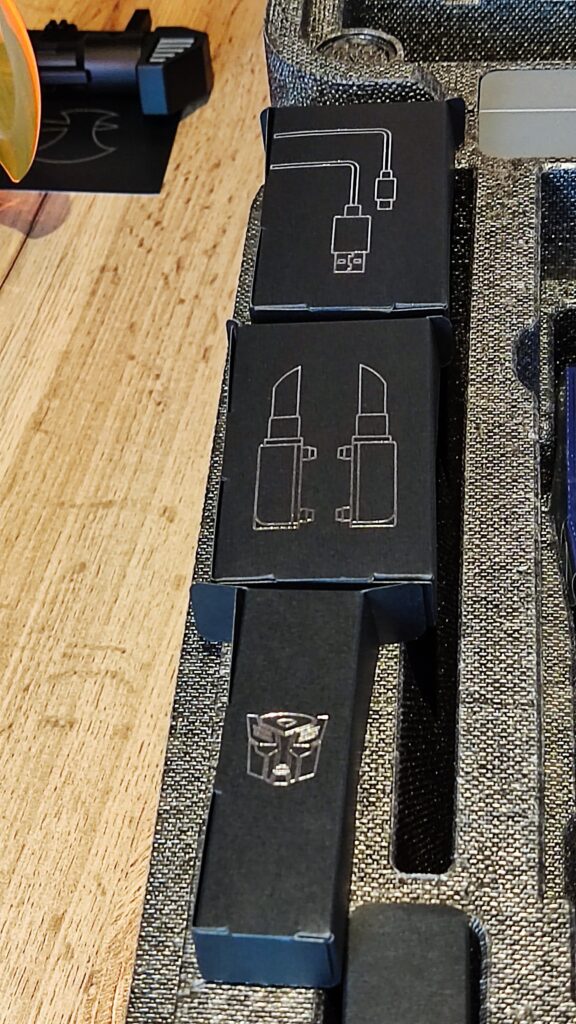
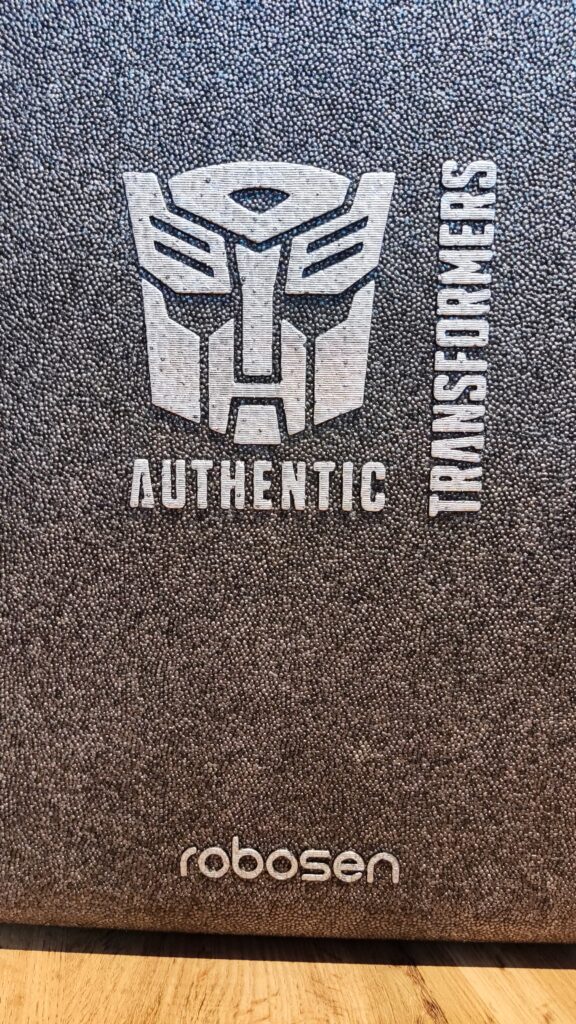

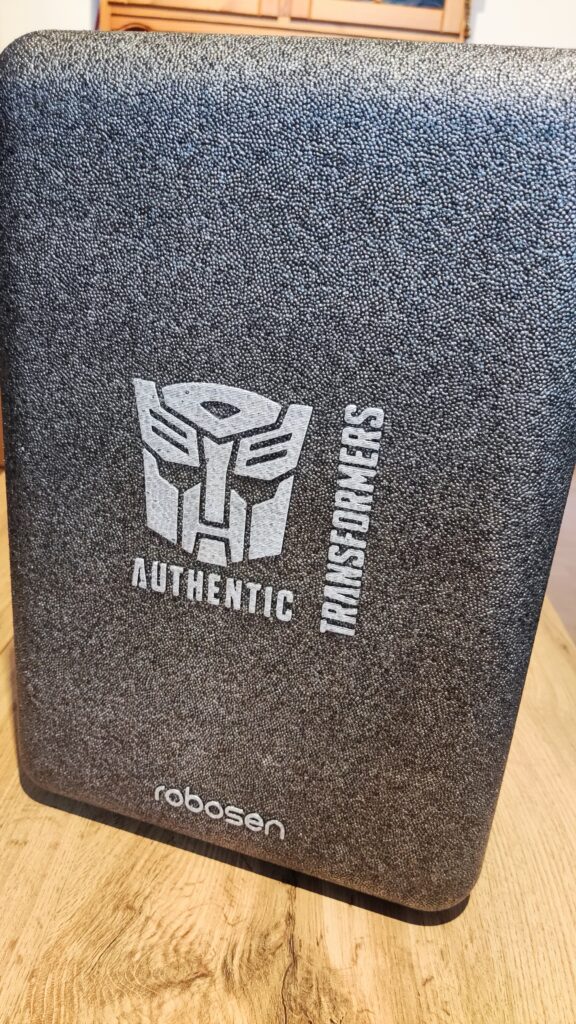
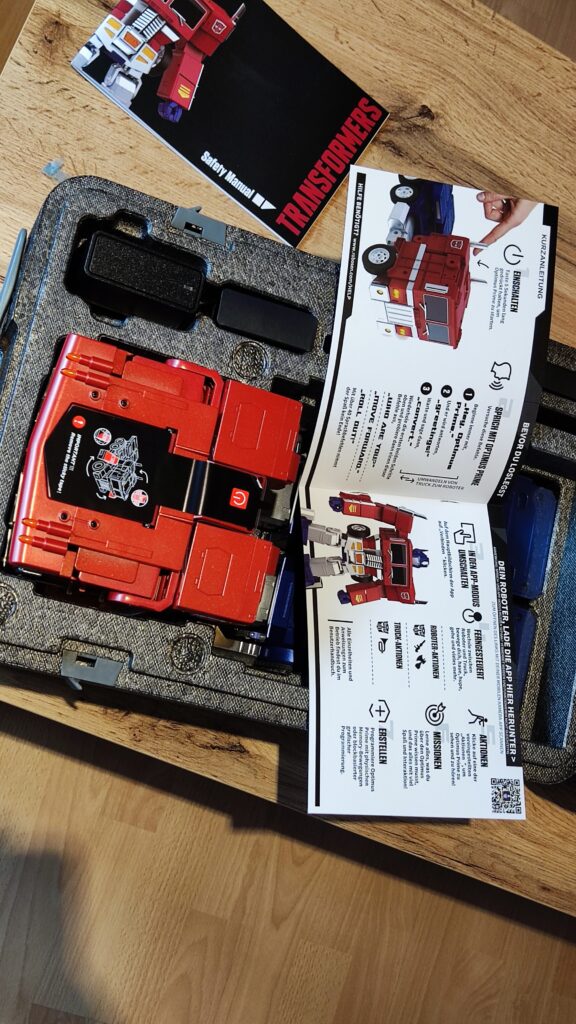
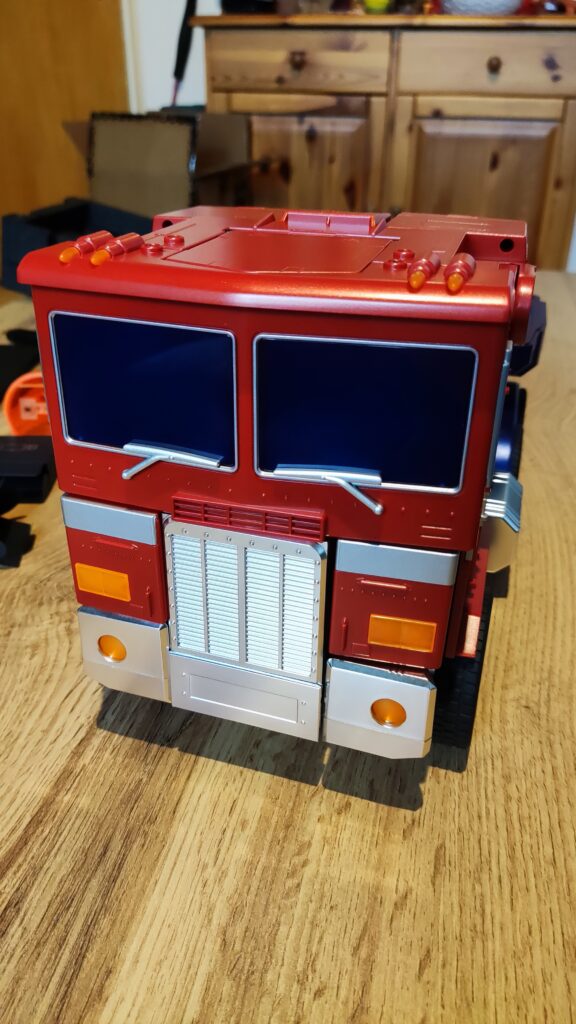


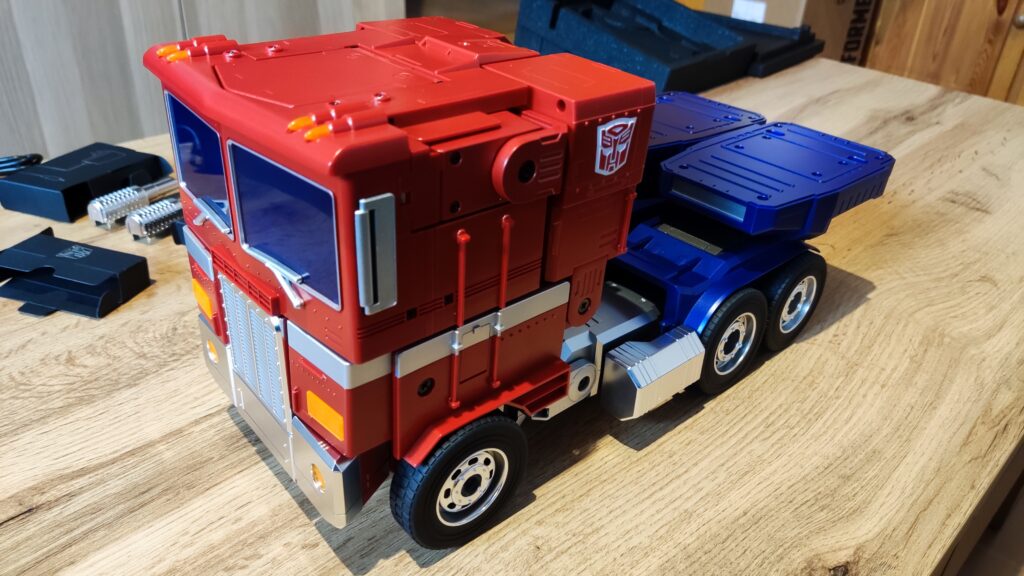
Are you a fan of intelligent robots and artificial intelligence? The Robosen company has recently announced that the Flagship Optimus Prime robot will soon be available in Germany. This is especially great news for all Transformers fans who have always dreamed of owning their own Optimus Prime robot. This new version is also the world’s first auto-convertible Optimus Prime. Robosen Flagship Optimus Prime is a highly complex and interactive robot toy that is supposed to imitate the iconic character from the Transformers franchise. More information is available here on robots-blog.com and on the Robosen website.
What is the Robosen Flagship Optimus Prime?
The Robosen Flagship Optimus Prime is a stunning robot based on the iconic and also arguably most famous Transformers character. The robot is able to transform from a moving truck into a robot and is equipped with a variety of smart features. It is 19 inches tall, 2.8kg heavy and constructed from premium components that are strong and long-lasting. More than 5,000 parts make up the robot toy, including 60 microchips and 27 servo motors that give it its sophisticated capabilities.
The robot is equipped with advanced technology, which gives it a variety of capabilities. For example, it can be controlled by simple voice commands to move or perform certain actions. A built-in speaker on the robot toy allows it to play music and sound effects, further enhancing the realistic experience.
In addition, the robot has an advanced motion system that allows it to move in unique ways. The robot can move on both legs and wheels and is capable of performing fast movements and complex choreographies. Robosen Flagship Optimus Prime is powered by a rechargeable battery that provides up to 4 hours of playtime on a single charge.

Transforming Mechanism
One of the Robosen Flagship Optimus Prime’s most striking characteristics is its transforming system. It converts from a robot to a vehicle using a complex motor system that can carry out fast and precise movements. It is one of the fastest transforming robot toys available because the full transformation takes only 5 seconds. Advanced algorithms enable Optimus Prime to walk on two legs.
Voice Command System
Immersive Voice Commands power the interaction with Robosen Flagship Optimus Prime’s vocal command system, enabling it to recognize and carry out a variety of speech orders. By just saying commands like „transform,“ „roll out,“ and „attack,“ users may direct the robot toy. The voice command system is an excellent feature for both kids and adults because it is made to be simple to use and is incredibly responsive.
What are the main features of the Robosen Flagship Optimus Prime?
Robosen Flagship Optimus Prime has a wide range of functions that make it a fascinating and entertaining robot. Among the most important functions are:
– Intelligent control (Voice Activated): the robot can be controlled by simple voice commands to move or perform certain actions.
– Smartphone app (Remote Control): the robot has its own app that allows the user to customize various settings and functions. Optimus Prime can be remotely controlled or programmed through the app.
– Movement system: the robot is equipped with an advanced movement system that allows it to move in unique ways.
– Programmable functions: The robot can be programmed by users to perform certain movements and actions. The program/movement sequences created can then be shared with other users to expand the functions for all users.

What can you do with the accompanying smartphone app?
Connect the app to the Robosen Optimus Prime robot to bring Optimus Prime to life while learning to program and enjoying an immersive experience. Let Optimus Prime go on excursions, reenact movie scenes, or challenge him to take on various tasks and challenges. Completing missions in the app unlocks additional features for Optimus Prime, resulting in a more interactive gaming experience. You can also watch videos in the app to see cool actions from Optimus Prime and get inspired by what other programmers are doing with their Optimus Prime robots. The smartphone app is already available now for IOS and Android.
Comparison with other Transformers Toys in the market
Robosen Flagship Optimus Prime stands out from other Transformers toys in the market due to its advanced features and functionality. While there are other transforming robot toys available, none of them offer the same level of interactivity and control as Robosen Flagship Optimus Prime. Its voice command system, mobile app elements and licensed sounds and voices from the movies make it a unique and engaging toy that offers a more immersive and interactive experience for users.

Where can the Robosen Flagship Optimus Prime be purchased?
The Robosen Flagship Optimus Prime will soon be available in Germany for 999€. Interested parties can order the robot directly on the Robosen website. Robosen Robotics has also shown interest in using its robotics technology to enter new areas, including those in education. Seeing how the business innovates and creates new goods in the future will be exciting.
Bring the epic battle between the Autobots and Decepticons to life with Robosen Flagship Optimus Prime, the ultimate transforming robot toy. With its advanced features, interactivity, and responsiveness, it offers a unique and engaging experience for all ages. Don’t miss out on this one-of-a-kind toy, get yours today!















